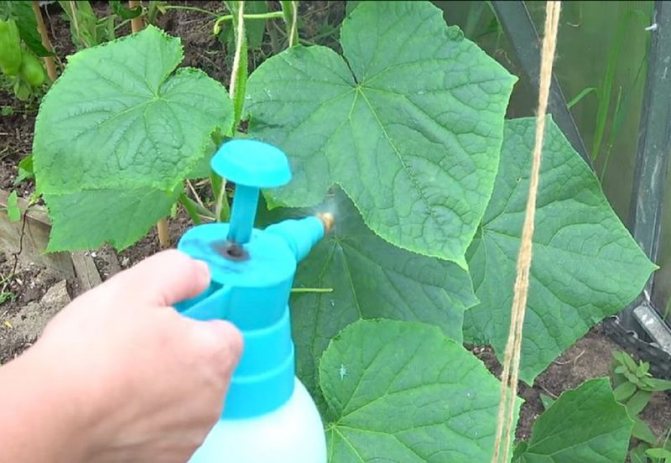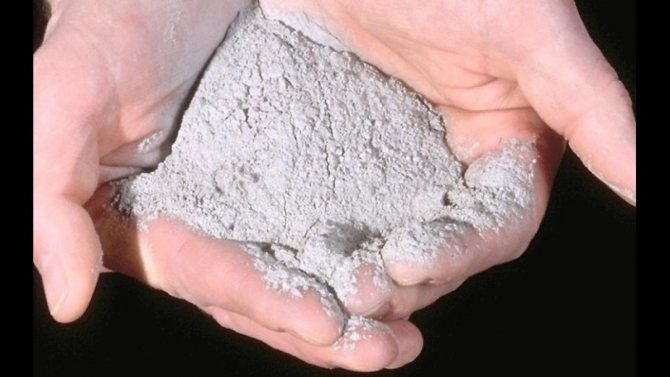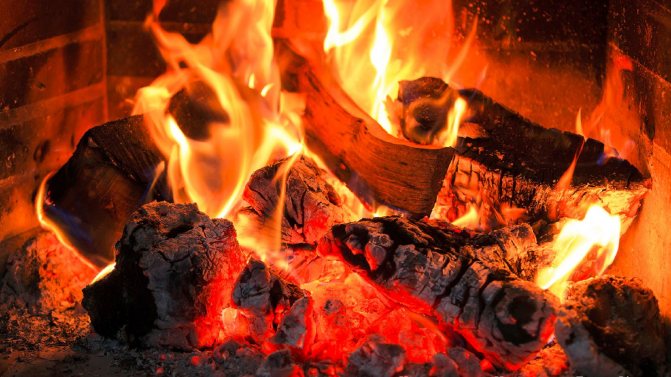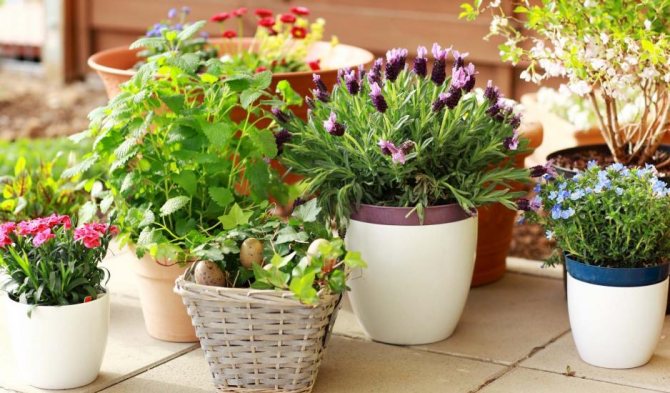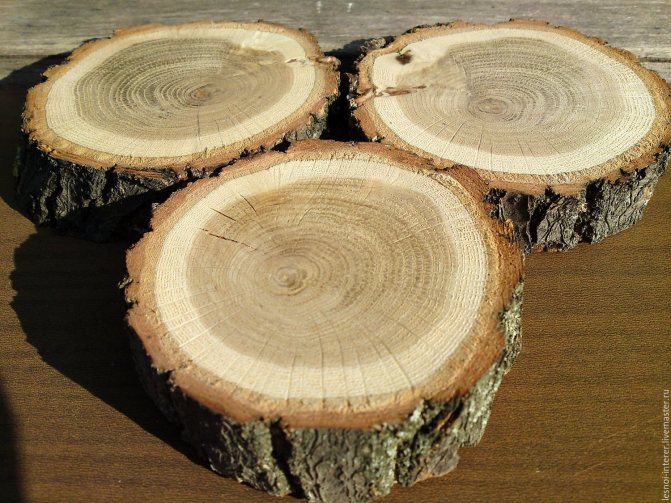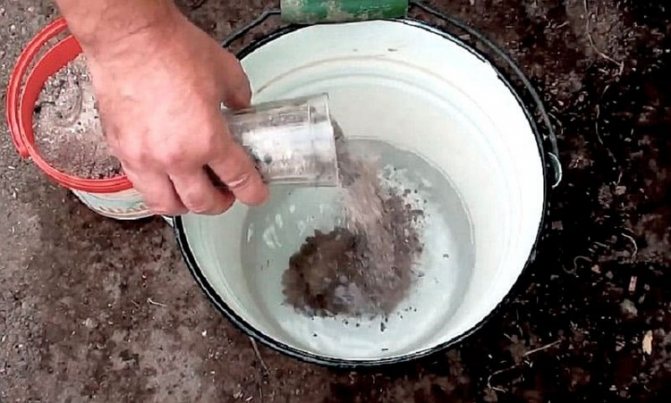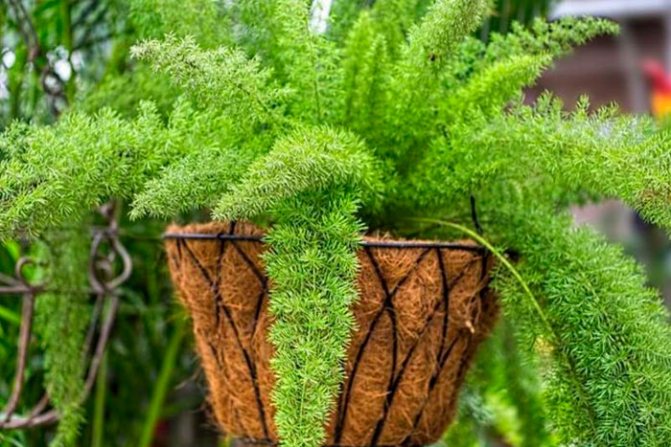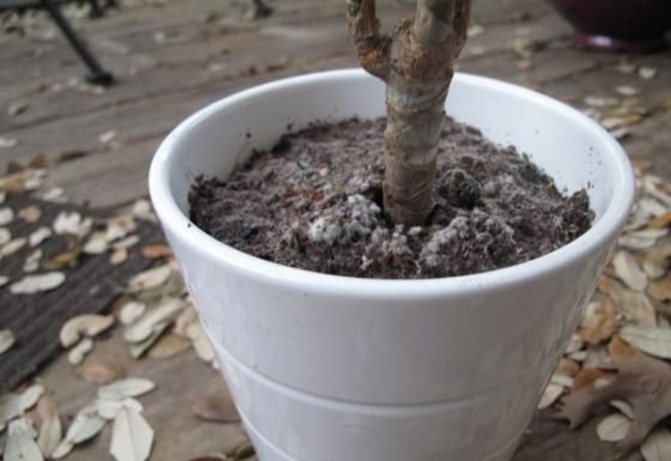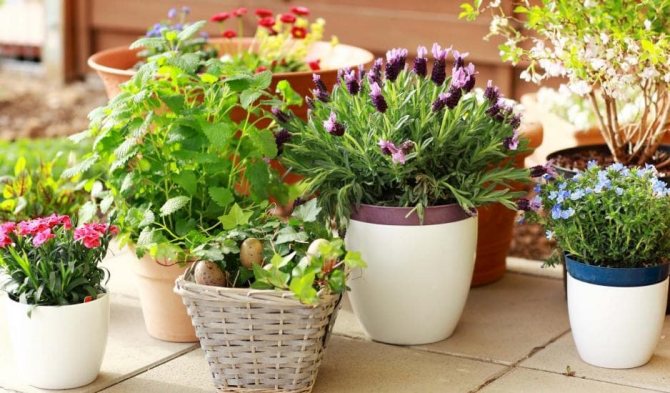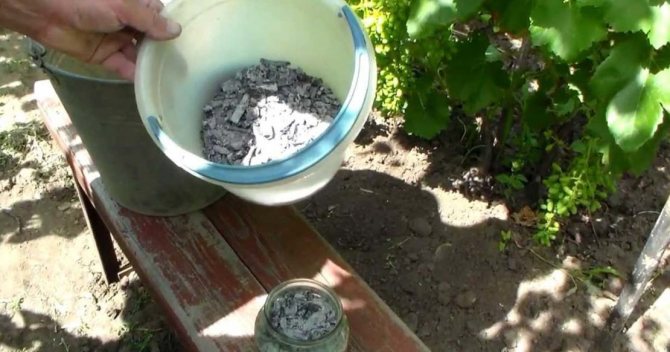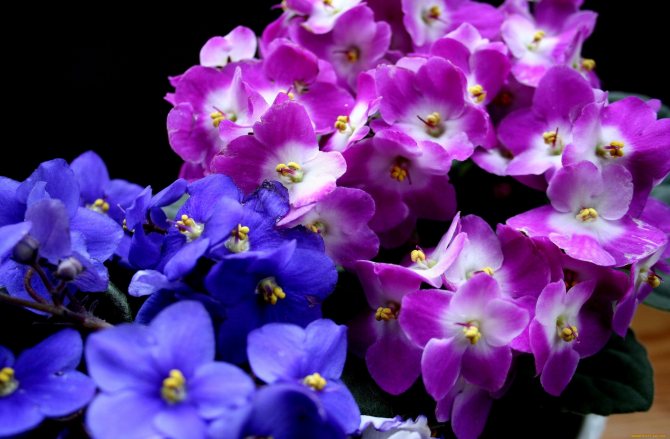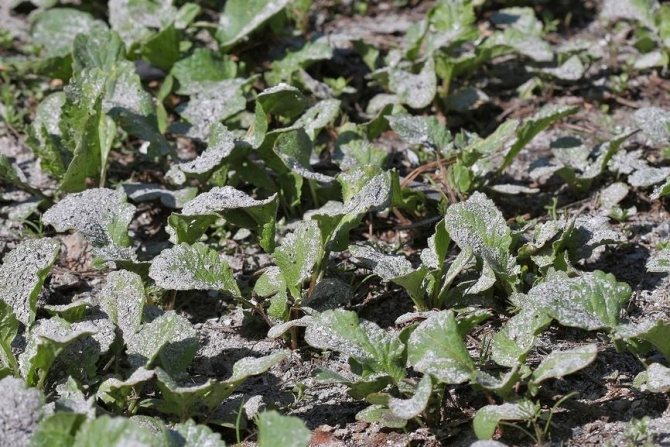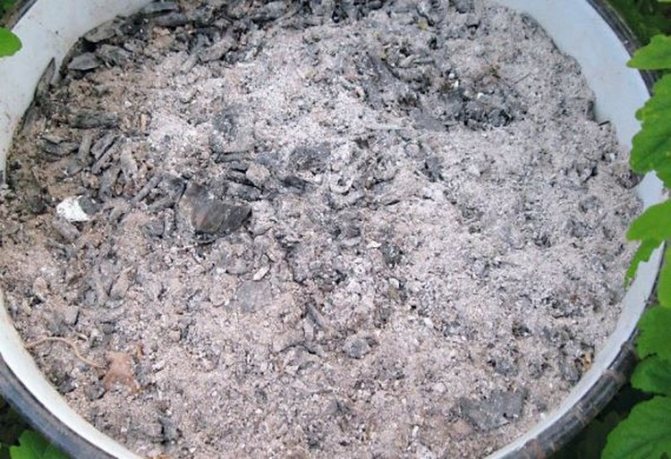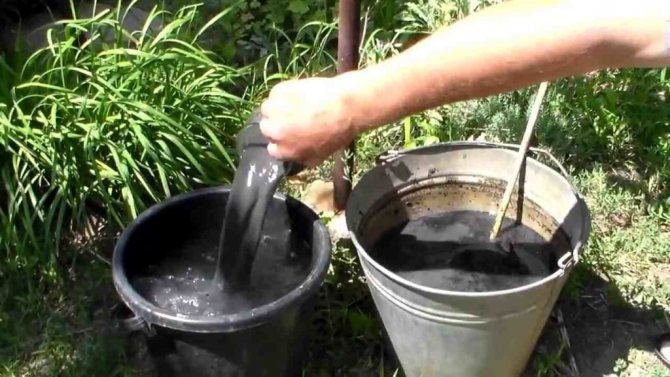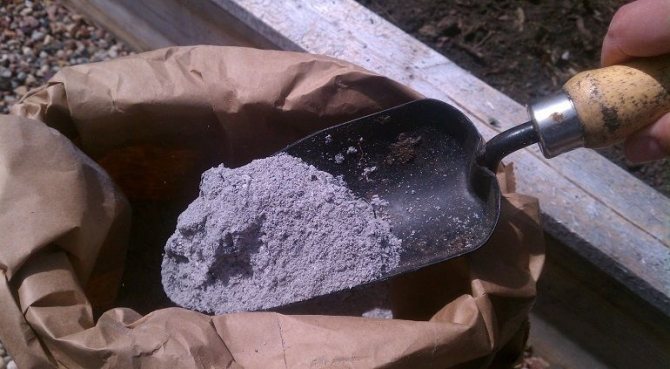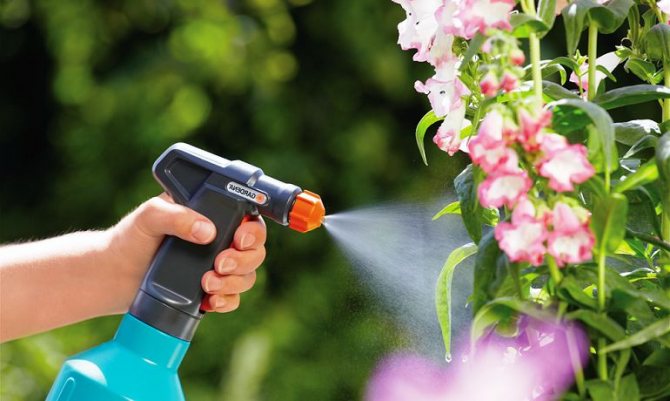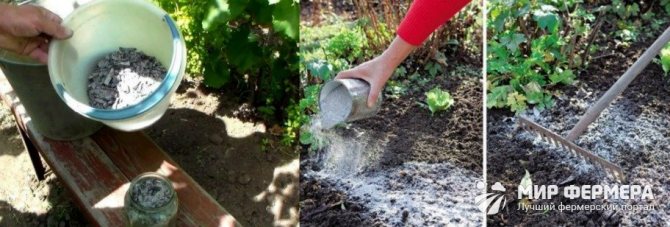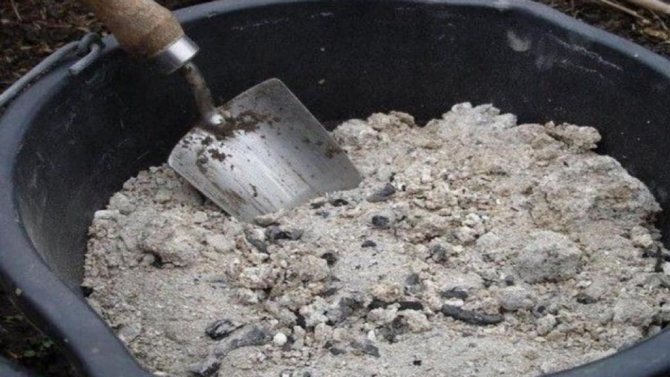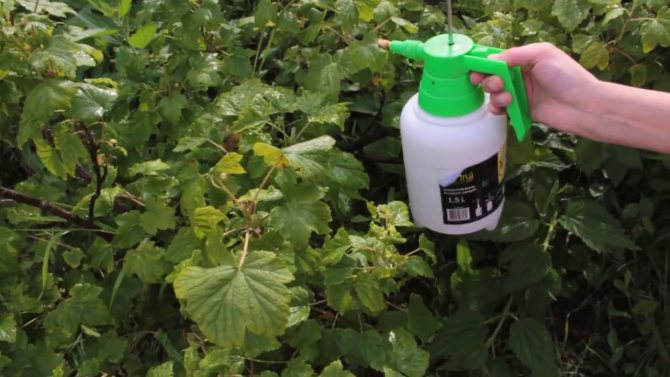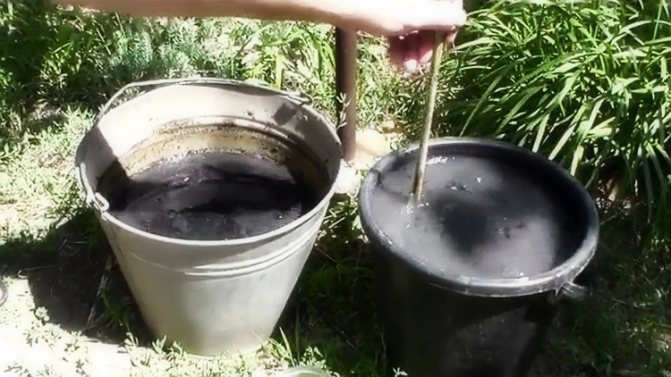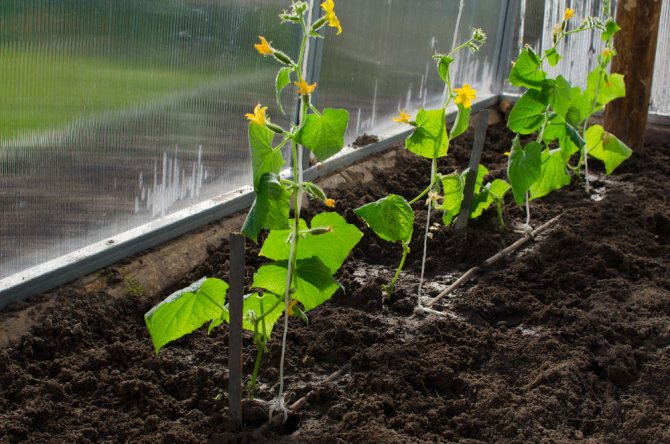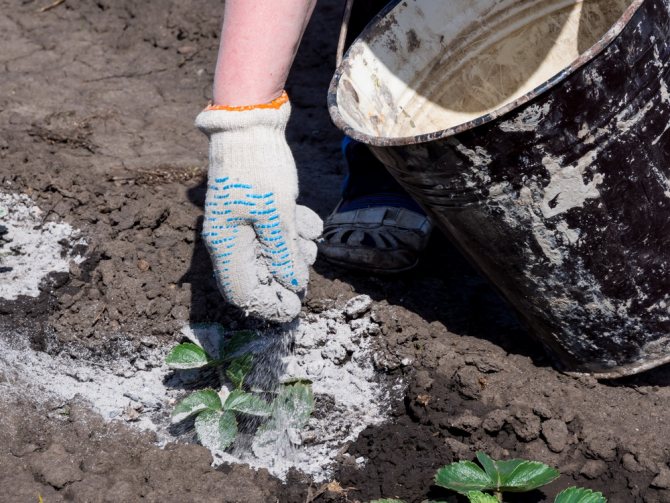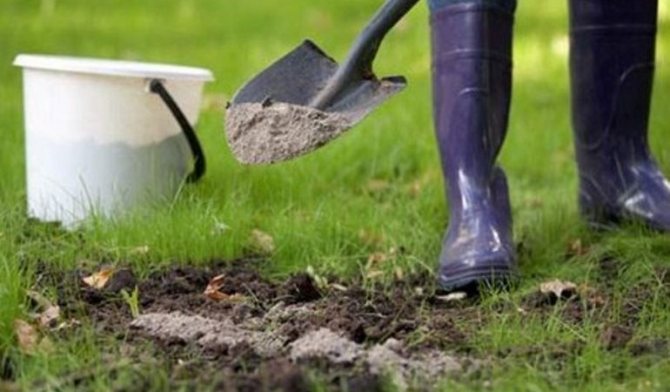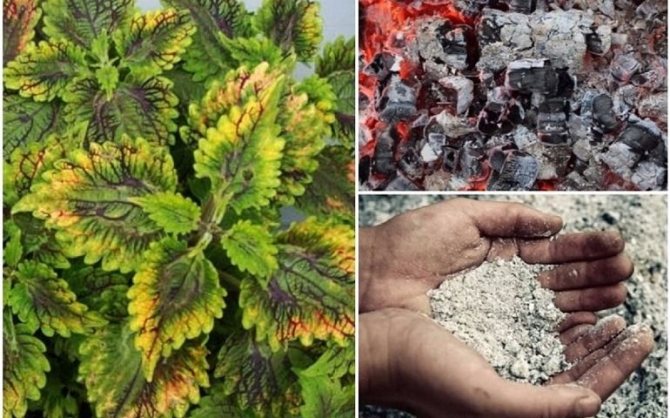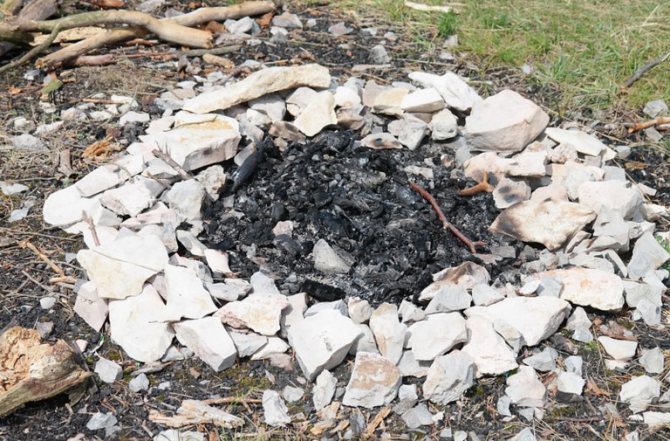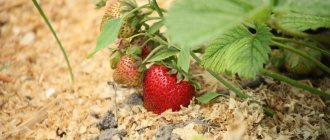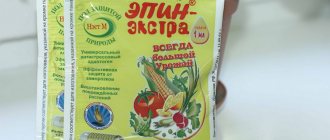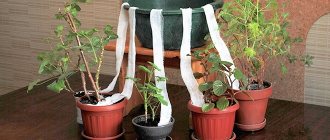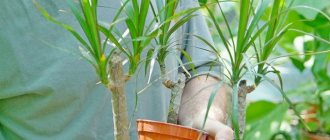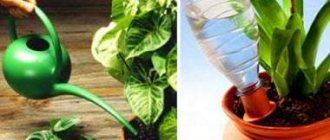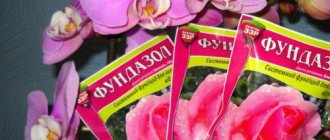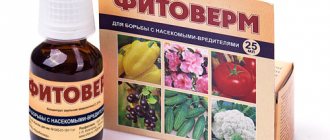Wood ash, as a useful fertilizer for horticultural crops, was known in antiquity. But even modern gardeners, with access to the most modern means, quite often use this drug as a top dressing.
In today's article, we will consider the main properties of ash that can be used to saturate plants with useful substances, as well as provide detailed instructions for its use in the garden and vegetable garden.
Types of evils
Ash can be obtained by burning dry straw, grass, branches and leaves of deciduous and coniferous trees. It is used even with the remains of coal. Do not fertilize with red ash because of the high content of iron in it, as well as ash and coals from burnt household waste, paint, film, newspapers - all harmful substances will pass into plants and contaminate the soil.
In terms of chemical composition, fern leaves and sunflower stems contain the most potassium and phosphorus - up to 40%, other plants give these minerals twice less when burned. Pine and birch firewood provides the most calcium. Ash also contains magnesium, manganese, sulfur, boron, copper, all of which are in a form that plants can easily assimilate. The poorest ash is considered to be shale and peat ash - it contains only 1-1.5 percent potassium and phosphorus, and half as much potassium as can be obtained from grasses and firewood.
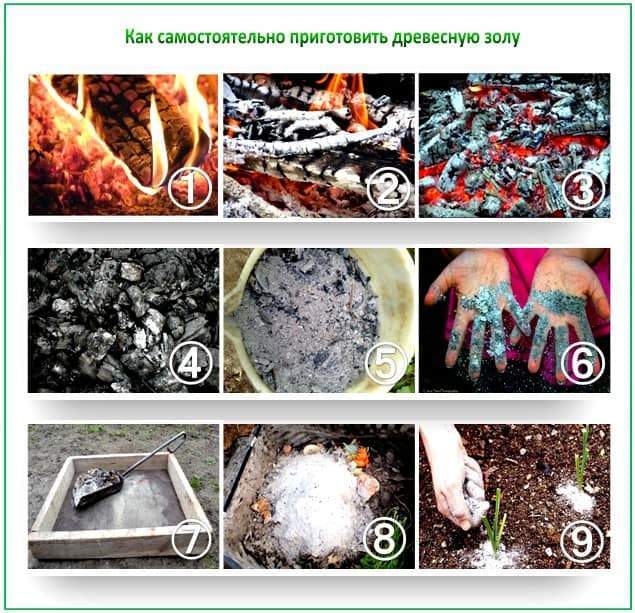
Answers on questions
Can cigarette ash be used as plant fertilizer?
Cigarette ash can be used for indoor flowers, in this case it is enough to collect 5-10 grams. dry ash and pour into a flower pot under the bush.
How to apply ash from the stove?
The ash from the stove must be sieved before use. Coal ash is also rich in minerals and useful trace elements. In general, any plant residue is suitable for the preparation of mineral fertilizer from ash - tree branches, tops from the garden, dry herbs and leaves.
Is it possible to fertilize citrus fruits with ash?
Definitely yes. Top dressing with citrus ashes will give them a better chance of survival even in a climate unusual for the culture.
Ash chemical composition
Ash contains about 30 types of trace elements that all plants need for full development. Flowers grown in the house can suffer from a lack of them more than outdoors, since the amount of land for them is limited and quickly depleted, which leads to developmental delays, disease and pests. In all these cases, fertilizing the soil with ash can be invaluable - it will not only add the necessary minerals, but it will also do it quickly.
By the appearance of the plant, it is possible to assess whether it needs feeding and whether the elements that can be obtained from ash are needed here - potassium, phosphorus, magnesium, calcium.
Potassium-rich ashes provide plant resistance to diseases, leaf burns, root rot. The lack of a trace element is visible when the lower, old leaves begin to die off - yellowing spreads from the edges of the leaf to the middle between the veins. In this case, the buds, if they are on the plant, freeze.
Phosphorus is an element without which it is difficult for plants to bloom. And if its deficiency is large, then the root system will also suffer.Magnesium is important for photosynthesis, without it the leaves become pale, curl, and if the lack of trace elements is not replenished, the plant will die. If the flower becomes lethargic and unsightly, it probably lacks calcium, which improves the flora's resistance to disease.
How to improve yields? We are constantly receiving letters in which amateur gardeners are worried that due to the cold summer this year there is a poor harvest of potatoes, tomatoes, cucumbers, and other vegetables. Last year we published TIPS on this matter. But unfortunately, many did not listen, but some still applied. Here is a report from our reader, we want to advise plant growth biostimulants that will help increase the yield up to 50-70%.
We advise you to prepare in advance for the summer season, pay attention to this biological product. There are a lot of positive responses.
Read ...
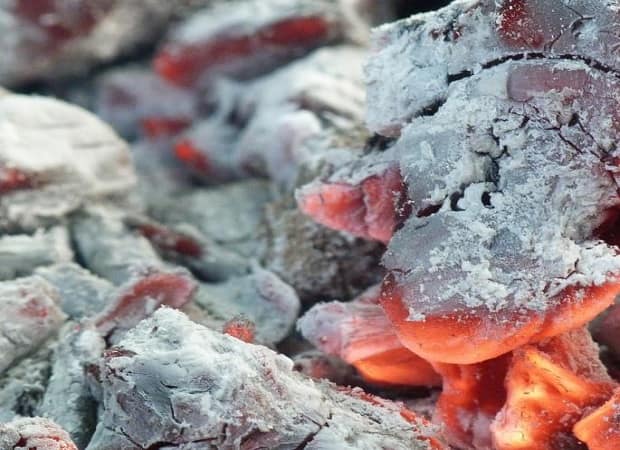

How to properly feed plants with ash
The disadvantage of ash fertilizer is the absence of nitrogen in it, since it evaporates into the atmosphere during combustion. But good harvests cannot be obtained without nitrogen nutrition. The only way out is to apply ash in the fall for digging, and nitrogen fertilizers in the spring before or during planting.
The simultaneous use of ash and nitrogen neutralizes the effect of both substances. Ash by its pH level is alkaline, nitrogen fertilizers are acidic. A chemical neutralization reaction takes place, and not a single useful substance will work. When two substances interact, large doses of ammonia are released, which leads to root burns.
Phosphorus fertilizers have an alkaline reaction. If you put them in the soil together with ash, then you can greatly change the chemical parameters of the soil to the alkaline side. In this case, nutrients will become inaccessible to plants. You need to choose what to use - ash or mineral mixtures.
The ash solution can be used at the stage of seed germination - this enhances germination and destroys the fungus on the planting material.
Ash in compost
You can add ash to compost. To do this, sprinkle them with each layer in the pile. After maturation, all nutrients will remain in the compost. The result is a complex organic fertilizer, because manure contains nitrogen, and ash contains potassium, calcium, phosphorus and trace elements.
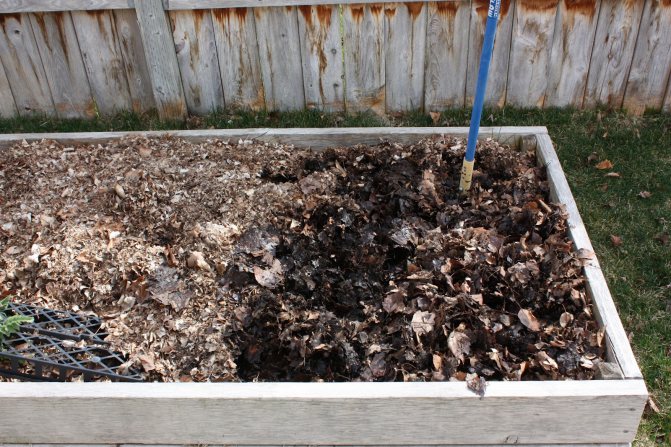

What plants like ash top dressing
Not all plants need neutral or alkaline soil. Vegetable crops respond well to watering with an ash infusion, cabbage especially loves it, because the composition of the ash does not allow the development of a fungal disease.
The minimum chlorine content allows the use of ash fertilizers for those plants that have a negative attitude to chlorine:
- raspberries;
- potatoes;
- grapes;
- currant;
- citrus.
It is not recommended to raise the pH too much for sorrel, spinach, blueberries, chicory, potatoes. Potatoes after liming or excessive ash application will hurt with scab.
You can not use a fresh solution for watering young seedlings - such an amount of nutrient salts is beyond the power of plants. You can start feeding after the appearance of the third true leaf. When planting in a hole, the ash must be mixed with the soil so that the roots do not come into contact with the ash mass - this leads to a burn.
Video: Preparation of an ash solution for feeding and processing plants
It is possible to spoil the crop of root crops by improperly using the ash solution against pests. Due to the increased nutrient content, ash spraying of radish, turnip, radish can provoke arrow growth. Root crops stop growing and the plant begins to bloom. It is already impossible to fix anything, because the fruits become rough, stiff.
How often to use the ash solution
Ash is a long-acting fertilizer. One application every 2 - 3 years is enough, to provide food for the plant. During the growing season, plants can be given an ash solution for feeding 2 times:
- the first time in the fall when preparing the soil;
- the second time during flowering before fruit setting.
A third time, you can use an ash solution to spray plants if pests have settled on them or signs of fungal infection are visible. In this case, all plants are processed, and the damaged one is removed from the root and burned to prevent the spread of infection throughout the garden.
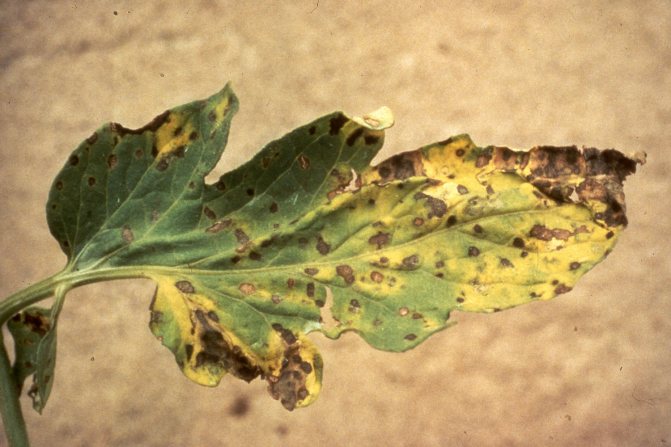

Ash for flowers: benefits
Potassium, which is rich in ash, is necessary for plants during the budding and flowering period. Phosphorus is needed for the setting and development of fruits, seeds, calcium reduces the acidity of the soil. Thanks to these qualities, ash can be applied under indoor and garden plants during the budding and flowering period.
The ash lacks only nitrogen, which contributes to the growth of green mass by the plant; it will have to be replenished in other ways and some time after using the ash.
If flowering flowers prefer acidic soils (azalea, gardenia, calla lilies, anthurium, indoor cypress, thuja), then they cannot be fertilized with ash, since calcium reduces the acidity of the soil and harms the plant.
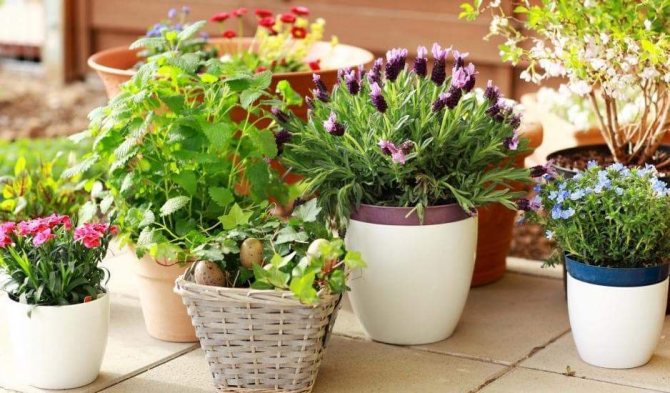

Another plus of ash is that it improves the composition of the soil. Improves its water and air permeability, which is always important for garden and indoor flowers. And small coals are able to disinfect the soil and take away excess water along with harmful substances. They can be found, for example, in tap water used to water domestic plants. This reduces the chances of root rot damage.
The benefit also lies in the fact that fly ash is able to protect plants from pests, such as aphids, slugs, nematodes, and diseases - rot, powdery mildew.
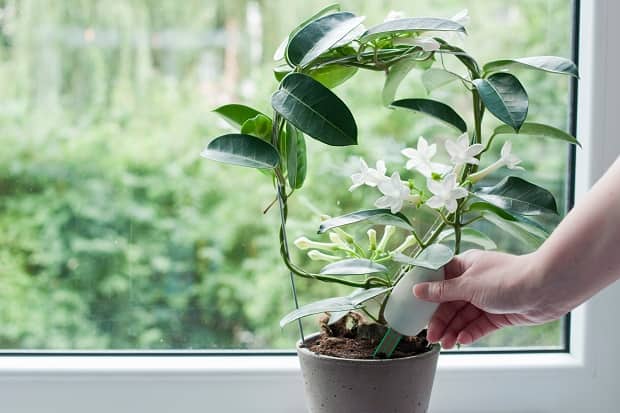

The benefits of ash for flowers
Helpful hints
If you have a stove or fireplace in your country house for burning wood, in no case throw ash away. It is suitable for feeding almost any plant in the garden and in the garden, both during planting and during the formation of ovaries. In fact, ash is an organic analogue of superphosphate, which is why it has received such widespread use.
However, it should be remembered that only ashes of organic origin should be used: the ashes obtained from the disposal of household waste will not only not bring the desired result, but can also harm crops.
The features of using ash as fertilizer are discussed in detail in the video.
Application methods
You can fertilize plants with ash in its dry form and make infusions or decoctions for watering. Dry fertilizer is applied when transplanting indoor and garden flowers into the soil or later, sprinkling the soil with it, mixing with the top layer. When transplanting indoor flowers in spring, ash is added to the ground at the rate of 2 tablespoons per 1 kg of finished soil, everything is thoroughly mixed, the flower is planted in a pots and watered. Fuchsias, geraniums, cyclamens and other flowers respond well to such enrichment of the land.
For indoor flowers, fertilizers are prepared in the proportion of three tablespoons of ash without a slide per 1 liter of water. The infusion must be held for a week, shaking the container every day - this will help the particles dissolve evenly. The infusion can be used together with organic fertilizers that do not contain ammonia. For a liter pot, 100 mg of liquid will be enough.
For horticultural crops, the ratio of the solution will be the same, but you need to water the soil with a large amount of fertilizer.
Ash broth is prepared from 20 grams of ash, filled with 2 glasses of water. The mixture is boiled for half an hour and filtered, and then diluted in two liters of water. It is better not to exceed the concentration, since the boiled ash is caustic soda or alkali, which can not only help, but also harm.Decoctions are often prepared for spraying, foliar feeding or pest control. You can add half or a third of a bar of laundry or green soap to the product for better adhesion when processing the leaves.
Dry ash is brought in at the rate of 2-4 kg per 10 square meters. It is better to do this in calm weather, so that the wind does not carry away light particles. If the fertilizer is scattered on the ground, it can be sprinkled with water to prevent scattering, or it can be dug up with the top layer of the earth.
It is better to do top dressing in the spring, and not in the fall, when the rains can wash out all the nutrients.
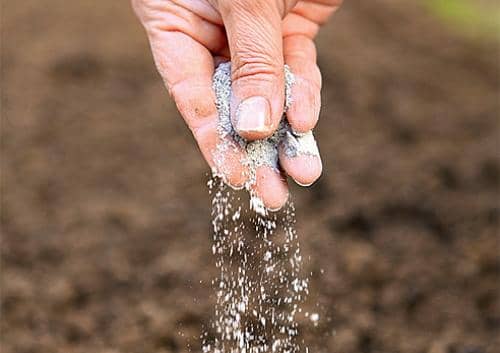

Adding ash to the soil
When working with ash, it is imperative to observe safety precautions: protect your eyes and respiratory tract from dust getting into them - although it is safe for health, it is better not to cause irritation. If dust gets into eyes, nose or mouth, then rinse them with plenty of water. Gloves are put on hands before work - ash dries the skin very much.
In order not to be mistaken in proportions and not to do everything "by eye", you need to know that 5-6 g of ash is placed in a tablespoon, in a glass of 250 ml - 100 g, in a liter container - half a kilogram.
Correct feeding with wood ash
So that the plants do not starve, but there is also no excess of substances, the correct proportions must be observed when mixing fertilizers of organic and mineral origin:
- allowed to mix with compost, humus or peat;
- when combined with superphosphate ash part should not exceed 8% from the total amount of phosphorus fertilizers;
- it is preferable to use sulfate substances when mixing dressings.
It has been noted that a combination of ash and dry tea leaves containing potassium gives a good effect. Before laying in the soil, they are mixed in a 1: 1 ratio.
Ash against pests
Ashes are used by gardeners when there is a need to destroy and repel pests such as aphids and slugs. Slugs and snails will not be able to get to the plant if ash is poured around it. For outdoor plants, this method is not the best, since it is unlikely that it will be possible to keep the dust dry for a long time, but if the plantings are in a greenhouse or greenhouse, then this method is acceptable.
Dry fly ash also helps to get rid of wireworms and nematodes, and in order for it to last longer, you need to spray the flower leaves with water before dusting or carry out all the actions until the morning dew has subsided.
Home flowers from aphids and various flea beetles can be protected by dusting the bushes with ash, wiping their leaves with ash and soap broth or sprinkling them with it. Doing wet processing is necessary in the evening in dry weather. In the sun, the treated leaves can burn, and high humidity will prevent the solution from holding on to the plant until the pests die. This also applies to indoor flowers: processing should be carried out in the evening or on a cool day, but after the procedure, the bushes cannot be kept in direct sunlight and sprayed with water for several days. If necessary, the process is repeated after two weeks.
Structure
Almost the entire periodic table is collected in the ashes of plant residues. The only component missing from the ash chemistry is nitrogen. Depending on the raw material burned, the ratio of the main trace elements can be different.
| Ash type | Phosphorus | Potassium | Calcium |
| Sunflower | 4 | 35 | 20 |
| Buckwheat husk | 4 | 35 | 19 |
| Rye | 6 | 14 | 10 |
| Wheat | 9 | 18 | 7 |
| Potato tops | 8 | 20 | 32 |
| Birch | 6 | 12 | 40 |
| Spruce | 3 | 4 | 26 |
| Pine | 6 | 12 | 40 |
| Peat | 5 | 4 | 26 |
| Dung | 6 | 12 | 9 |
Useful components of ash are in a form that is easily digestible for plants.
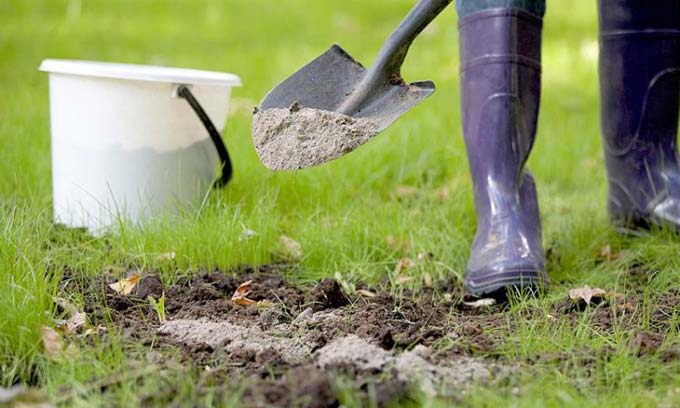

Ash: contraindications
In some cases, ash for processing and feeding is not suitable. This happens when:
- flowers prefer acidic soils,
- plants have interveinal chlorosis (white spots on the leaves),
- poor quality fertilizer - rusty or obtained by burning newspapers, plastic, rags.
- recently, a nitrogen-containing fertilizer was introduced into the soil: urea, ammonium nitrate, manure. The period between fertilizing with nitrogen and potassium-phosphorus compositions should be at least three weeks, otherwise the minerals will neutralize each other.
- there is an excess of potassium in the soil, which can be determined by the loss of leaves in indoor and outdoor flowers. On the garden plot, neighboring plantings will help to find out about the overabundance of the mineral: the fruits of apple and pear trees growing next to flowers become dark inside and will taste bitter.
Fertilizing garden crops with ash
Have you ever experienced unbearable joint pain? And you know firsthand what it is:
- inability to move easily and comfortably;
- discomfort when going up and down stairs;
- unpleasant crunching, clicking not on their own;
- pain during or after exercise;
- joint inflammation and swelling;
- unreasonable and sometimes unbearable aching pain in the joints ...
Now answer the question: does this suit you? How can you endure such pain? And how much money have you already "poured" on ineffective treatment? That's right - it's time to end it! Do you agree? That is why we decided to publish an exclusive interview with Oleg Gazmanov, in which he revealed the secrets of getting rid of joint pain, arthritis and arthrosis.
Attention, only TODAY!
A lush green garden, as you know, is the result of the hard work of farmers. It requires care and attention, so in order to grow delicious cucumbers, tomatoes, potatoes and other healthy vegetables, it is necessary to prepare in advance both the time for growing and fertilization for the soil.
Top dressing of the soil is one of the most important factors affecting the correct growth and taste of the garden, so this issue cannot be ignored. You can, of course, buy all the necessary mineral fertilizers in special stores, but one cannot dispute the fact that natural substances will bring much more benefits than purchased ones.
Wood ash is considered one of the most economical and readily available dobriv. Almost all villagers always have this fertilizer at hand - tree branches and dry grass are burned. When digging up potatoes, one must not forget to leave and dry its tops - when burned, its ash contains a huge amount of useful microelements. Buckwheat and sunflower tops are also excellent means for obtaining the necessary ash. This so easily obtained ash should be used for feeding. Residents of cities who need ash to fertilize soils in their summer cottages can use the ash that remains in fireplaces after burning coal and firewood.
It is useful to feed with wood ash:
- Acidic soils for growing vegetables;
- Soils where fruit trees grow;
- Land for growing indoor plants in pots;
- Land for growing seedlings in greenhouses.
You can also feed with ash in its pure form or with an infusion of wood ash and field soils, which are sown with cereals, but it is not always possible to get such a large amount of this natural fertilizer to be enough for feeding large areas.
Benefit and harm
Ash is cheap and can be obtained after heating premises, holding picnics, clearing the garden or vegetable garden from vegetable (but not household!) Waste. On the site, it can bring many benefits:
- it is an excellent top dressing for most crops, ashes can partially replace fertilizers sold in garden centers;
- deacidifies the soil;
- coal ash is used to improve the structure of heavy, dense soils;
- plant combustion products accelerate the decomposition of organic matter, improve compost;
- does not contain chlorine;
- ideal for feeding plants that should not be given nitrogenous fertilizers, such as parsnips, garlic, lettuce;
- contains about 30 microelements;
- nutrients are contained in a form that is easily assimilated by plants;
- effective in combating many pests, diseases;
- can prevent and suspend putrefactive processes;
- positively affects the soil up to four years.
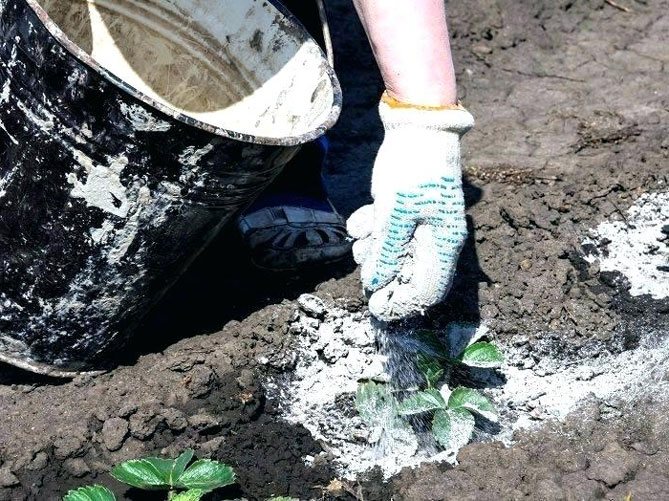

Damage to plants can be caused by improper use of ash, for example:
- It is not recommended to apply ash in bulk on highly alkaline soils. By the way, in order to "spoil" the soil on one hundred square meters, you need 30 kg of ash. Considering that a 1 liter can contains about 500 g of ash, for "sabotage" 60 liters will be required, that is, 6 full buckets. Yes, gardeners are happy when they manage to collect and use a bucket of ash during the season.
- Ash should not be poured under plants that prefer acidic soil. What is this disadvantage? Although the question is, of course, an interesting one. Experienced gardeners do not feed pine ashes, but other conifers and hydrangeas will definitely be given this product rich in trace elements, and then acidify the soil. It is better not to use ashes for crops that prefer a pH of 4.5 and below for beginner growers who are not familiar with agricultural technology.
- Ash is not only harmful to pests. Earthworms don't like him. If you use ash pointwise, directly under the plant, it will be beneficial. Earthworms will dig holes nearby. To completely cover the garden with ash, you must first collect it. Even in a conflagration, a lot of coals and embers remain, but little ash.
- If there is a lot of potassium in the soil, and even feed the plants with ash, leaves will fall off them. And all because the site does not need ash, but sour peat or fresh manure.
- Excess calcium gives the fruit a bitter taste. And without it, the plant develops worse and absorbs nutrients! Plants should not be covered with ash! You need to learn how to properly use ash, and not waste valuable fertilizer.
So it is more correct to talk not about the damage that ash can bring, but about the precautions when using it in the garden and the compatibility of fertilizers:
- ash should not be used simultaneously with ammonium nitrogen fertilizers (urea, ammonium nitrate, etc.) - alkali and NH3 react leading to the loss of nitrogen;
Important! But you can mix ash with sodium and potassium nitrate! They do not contain ammonia.
- it is unacceptable to combine superphosphate with ash, since the latter ceases to be absorbed by plants, but you can use phosphate rock;
- ash can be added to ready-made infusions of herbs and mullein (finished fermentation) - there is no longer any ammonia, but it is impossible to unripe infusions.
Warning! It is unacceptable to use ashes obtained from burning municipal solid waste, plastic and glossy magazines in the garden!
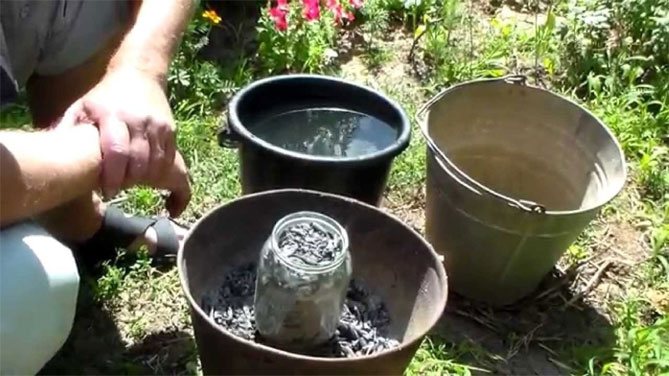

Ways to use wood ash in agriculture
- Dry ash. Such fertilization will have a good effect on the growth of a large number of flowers. These are tulips, peonies, roses, chrysanthemums, and many others. Among vegetables, feeding with dry ash will appeal to those who grow cucumbers, tomatoes, cabbage and potatoes. Their rapid growth will be guaranteed. Dry ash also perfectly feeds indoor plants, therefore, when transplanting them, it is recommended to first prepare the ground with ash. In order for the plants to grow well, you need to fertilize the soil with dry ash as follows:
- To grow indoor plants, you need to mix the earth with ash - 1 kg. soil needs about 3 tablespoons of ash;
- To grow flowers in a flower bed, you can pour a little ash under each planted flower - about 1 teaspoon (without a slide);
- To grow vegetable crops, you need to sprinkle the ground with ash in advance and dig it up. Thus, the ash will be mixed with the soil and the plants will receive all the necessary elements in the future. For 1 m². you need to pour half a liter of dry ash.
- Wet ash. Such ash loses its main component - potassium, therefore it is not recommended to use it wet.But moist wood ash is an excellent ingredient for composting - over time, it will make a unique fertilizer.
- Infusion of wood ash. It is the most useful and widespread fertilizer used in agriculture.
Infusion of ash (ash) is used for the following purposes:
- For feeding the soil;
- For the prevention of many plant diseases;
- For pest control.
Now let's talk about everything in order.
Beneficial features
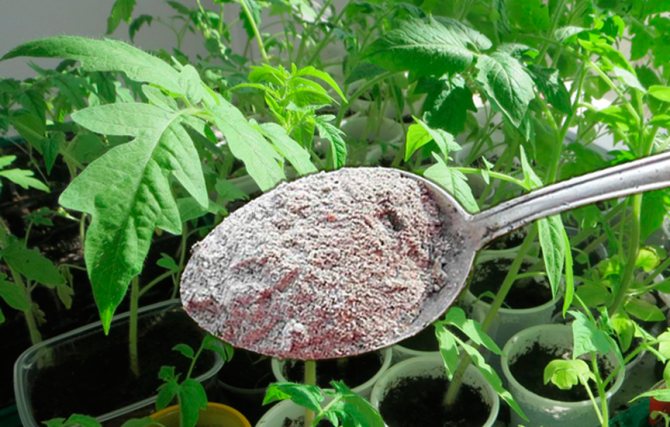

At the beginning of the growing season, calcium is important for plants. It affects the growth of green mass, especially for vegetable crops, in which a powerful aerial part is formed over the summer: pumpkin, cucumber, tomato.
| Chemical compound | Action on the plant |
| Calcium carbonate | Activates biochemical processes |
| Calcium silicate | Improves absorption of nutrients |
| Calcium sulphate | Prolongs fruiting, has a positive effect on the formation of the root system |
| Calcium chloride | Improves photosynthesis, affects the production of enzymes, increases winter hardiness of grapes, fruit trees |
The antifungal properties of CaCl₂ are used in storing the harvest of apples, potatoes, carrots, in the treatment of diseases of roses (black leg), strawberries, grapes, tomatoes.
Potassium orthophosphate, which is part of the ash, normalizes the water balance in plant tissues, increases the winter hardiness of perennial crops, creates an alkaline environment favorable for the growth of flowers (rose, chrysanthemum, lily). Sodium compounds activate the synthesis of enzymes, normalize water balance, magnesium is involved in carbohydrate metabolism.
Top dressing
To feed the soil, the following infusion of wood ash is used.
Option 1.
Gradually add 100-150 g of dry ash to a bucket of water and mix it all thoroughly. The ash should dissolve almost completely. With this infusion, you can feed the soil where indoor plants or flowers will grow.
Option 2.
In 1 liter of boiling water, you need to dissolve 1 tablespoon of wood ash. The tincture should be allowed to brew for 7 days. Shake the jar daily so that the natural fertilizer dissolves faster. With such an infusion, you can feed the soil on which seedlings, vegetables, flowers grow.
Ash feeding of the vegetable garden and garden
Ash works great in the direction of many horticultural and horticultural crops:
- Cucumbers. Feeding of cucumbers with ash is carried out during the entire vegetative period. Thanks to this, the crop has great chances to give the maximum yield of healthy juicy marketable vegetables.
- Tomatoes. For the vegetable garden, the tool is used without fail on the site where it is planned to plant tomatoes. It will save them from powdery mildew, as well as from snails and slugs. To achieve a good result, watering the plant must be carried out with the addition of 1 glass (or 100 g) of powder per 10 liters of water.
- Carrot. The use of ash for the garden extends to carrots, since a vegetable needs a mineral composition and components that are present in it.
- Potatoes. To save the culture from the invasion of Colorado beetles and prevent a second attack, you can use the powder of burnt wood. It is necessary to fight pests by dusting the bush and potato leaves, as well as by introducing an aqueous solution of the substance under the bush.
- Strawberry. Garden strawberries will be grateful if they are fed with a solution of ash and water during the growing season. So you can ensure high yields and protect the leaves of bushes, roots and stems from powdery mildew. And also scare off snails and slugs crawling on the sweet aroma of ripe berries. Therefore, it is definitely worth fertilizing the soil under the strawberries with coal ash.
- Grapes. This horticultural crop is vulnerable to rust and powdery mildew. For the treatment and prevention of these diseases, it is recommended to apply dry powder under the root, as well as spray the bush with a solution of wood ash.
- Roses. Flowers in autumn need the support of the mineral composition of the soil, and in winter they need additional strength. Pour 1 cup of dry ash under the rose bush and loosen the soil.
Other plants that love wood ash and react favorably to it:
- raspberries;
- strawberries;
- currant;
- peas;
- pepper;
- eggplant;
- greens (salad, dill, parsley);
- citrus.
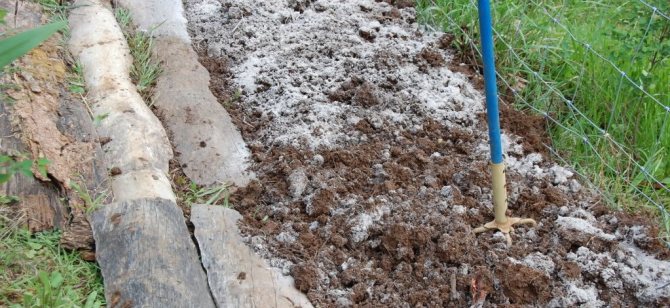

Against diseases and pests
For the prevention and treatment of plant diseases, the following ash infusion is used:
For half a liter of warm water, you need 25 g of this natural substance. Easily soluble parts of the ash will dissolve in water - for this, the jar of liquid must be left for two hours. When the infusion is ready, it is necessary to spray the "diseased" parts of the plants with it. You can also sprinkle the wounds of the plants with charcoal powder.
To combat pests of all types of plants, different versions of infusions are used.
Option 1.
Ash tincture against aphids and caterpillars. As you know, the plant most susceptible to the destruction of aphids is cabbage. Aphids appear very quickly, and accordingly, very quickly destroy the plant. To prevent this from happening, you need to pour one glass of charcoal residues into a ten-liter bucket and fill the bucket to the brim with cold water. All contents must be mixed well with a wooden stick and allowed to brew for 10-12 hours. Then you need to mix the solution thoroughly and strain. The resulting liquid must be sprayed completely with the cabbage - both the outer parts and the inner ones. Spraying should be done daily in the early morning, preferably at 5 am. If you regularly protect cabbage plants with ash tincture, then such pests as aphids will not bother.
Option 2.
Ash decoction against aphids. To defeat aphids, you can use the following recipe. Boil 1 glass of dry ash in 1.5 liters of water and let it boil for 20-25 minutes over low heat. Then the broth should stand for a day. The filtered liquid should be used to treat plants that may contain pests.
Option 3.
Ash decoction against gooseberry diseases. Powdery mildew often appears on gooseberry leaves, which spoils and subsequently destroys the plant. To prevent such a nuisance from happening, you need to use an ash solution. To prepare it, you need a large cauldron, into which you need to pour a bucket of dry wood ash and pour 3 buckets of water. This mixture should be brought to a boil and boiled for one hour. When a kind of broth cools down, you need to spray the bush with it. You can use this solution only after the ovaries are formed. Previously, it is impossible, as this will negatively affect the number of future fruits.
Option 4.
A mixture of ash, tobacco and laundry soap against pests. So that neither aphids nor other pests are disturbed, you can use the following infusion.
You need to mix equal amounts of ash, laundry soap and tobacco. Pour this mixture with a small amount of water and let it brew for several hours. Then you need to process the plants with a small amount of this infusion. This tool not only protects the garden from pests, but also helps to avoid a large number of various plant diseases.
The remains of burnt wood and coal are one of the best fertilizers that you don't need to spend money on. A large number of nutrients found in this fertilizer - potassium, magnesium, phosphorus, iron, etc. help the plants to grow normally and ripen in time. Feeding with wood ash infusions is an inexpensive process. In order for this fertilizer to be enough to feed the entire land plot, the ashes must be collected throughout the year. It must be stored in a dry place, and then it will not lose its beneficial properties for several years.
Video addition:
Ash infusion for plant nutrition is one of the most affordable and well-known means.Plant ash contains many useful substances, and it is quite easy to get it even in your garden.
How to get and store wood ash
Ash can destroy plants if, when burning wood waste, leaves, dry tops, plastic products, rags, shoes, and other non-plant debris are added to the fire. The ash will become toxic. When it is introduced into the soil, harmful substances (salts, heavy metals) will harm vegetables and affect the quality of the soil.
Not all wood is suitable for ash production. Boards not suitable:
- impregnated with special fluids (impregnation);
- painted or varnished;
- with traces of mold.
Do not throw cardboard into the fire. In addition to wood fibers, chemicals are added to it. Ash obtained from the combustion of wood-based materials (chipboard, WWS) will not be beneficial.
When wood is burned in a stove, ash is obtained, and ash and coal are obtained in a fire. Both combustion products can be used in the garden. Use the powder obtained by sieving for the preparation of liquid and dry fertilizers, pour the charcoal into the compost heap.
During the summer cottage, a lot of ash accumulates from the bath, the barbecue, the question arises how to store it. In conditions of high humidity, it will quickly lose all its beneficial properties. Water and snow wash away potassium and other trace elements.
For storage, you need a dry utility room and a sealed container:
- durable garbage bags;
- bags;
- any plastic containers with lids.
Comment!
In a sealed container, beneficial properties are retained for 4 years.
Benefits for plants
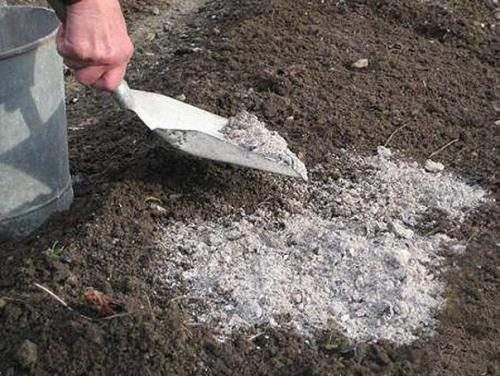

Any gardener knows how much effort it takes to get a good and high-quality harvest. Especially if the land for planting is rather heavy, acidic or depleted. To put it in order, it is necessary to apply various feeding and fertilizers. The simplest, but at the same time effective, is ordinary ash. It is a product obtained by burning grass, twigs and other organic matter. It contains trace elements such as calcium, potassium, manganese, boron, sulfur.
Ash is an alkaline substance, so adding it to the soil reduces its acidity. Heavy soil makes it easier to apply this fertilizer.
You also need to use wood ash carefully so as not to harm.
For plant nutrition, ash can be used dry. To do this, sprinkle a small amount of ash on the ground around the plants.
However, you can prepare an infusion of ash and water the beds with it.
The use of ash in the garden
For what signs of fruit damage is ash used:
- Cracks in the fruit of the carrot.
- Tomatoes turn black.
- Bunches of grapes are showered.
- Strawberries grow moldy and spoil.
- Potatoes turn black and rot during growth or storage.
- Rotting apples on branches or during storage.
- Ornamental plants suffer from fungal diseases.
From root rot, which is caused by the outbreak of fungal infection, the calcium chloride contained in the ash solution helps.
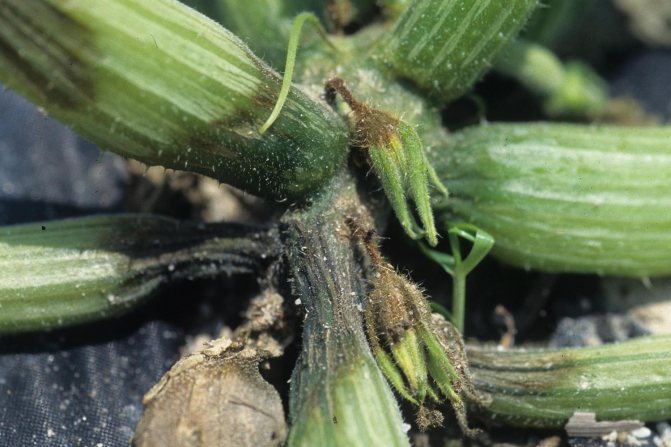

If the bulbs do not have enough calcium silicate, then the fruits exfoliate and dry out. These products must not be stored or used for food.
Calcium carbonate is an essential element for the ripening of vegetable crops. With the help of this substance, the cells are constantly replenished with nutrients.
Sodium chloride, in other words, common kitchen salt helps cucumbers and zucchini to accumulate water. Without sodium, the taste of vegetables becomes bitter, which cannot be corrected later. A similar effect is exerted by potassium orthophosphate, which is responsible for the balance of water in plant tissues. Without this substance, ammonia accumulates in fruits and leaves, which interferes with normal growth.
The sweet taste of vegetables depends on the magnesium content in the soil. He is responsible for the promotion of carbohydrates, from which starch is subsequently formed. Lack of magnesium reduces the taste and nutritional value of vegetables.
Against pests
Harvest and destroy plants:
- fungus;
- bacteria;
- insect pests;
- soil pests.
The chemical compounds in the ash prevent insects from reproducing and surviving on the leaves treated with the solution. A full-fledged complex of trace elements protects plants from fungus, supporting the immunity of vegetable crops.
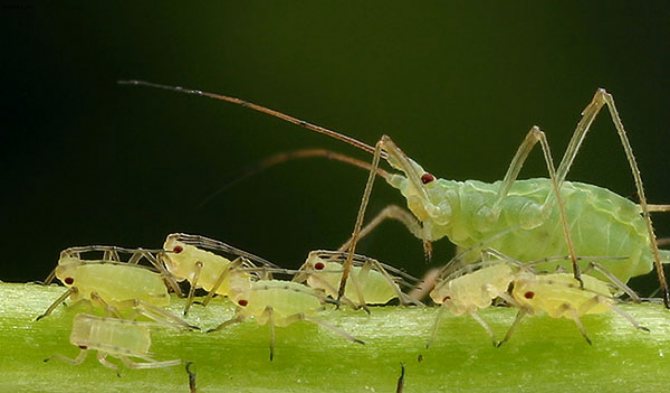

During the period of fruit setting, vegetables consume a lot of nutrients, so immunity begins to decline and a fungal infection gradually overcomes the plant. It is almost impossible to destroy it in the soil, except for preparing an ash solution for feeding plants and maintaining their health.
For foliar spraying, a solution of ash is prepared with the addition of laundry soap - this way it lingers better on the leaves. In the water infused with ash, rub 50 g of soap and stir.
Important! It is impossible to carry out processing on the sheet during the day when the sun is shining. To do this, choose the morning, or better evening.
Ash fertilization and weather conditions
Depending on the weather conditions, you can use different methods of fertilizing the soil with ash. On rainy days, dry matter can simply be scattered over the surface of the soil and it will begin to give food to the plants, using moisture from the rain. You need approximately 150 g per 1 square meter.
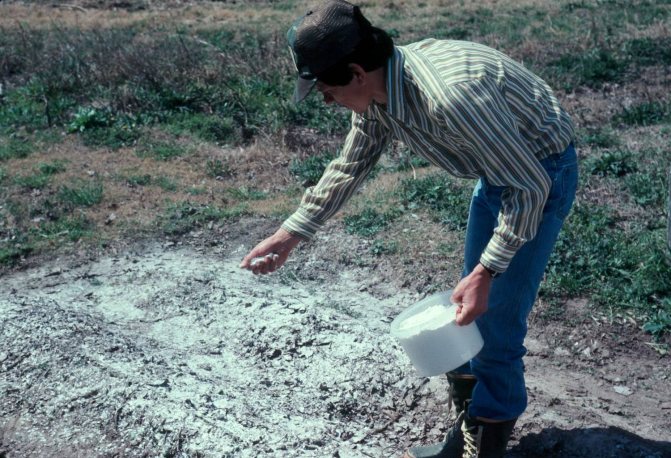

In hot weather, it is better to prepare a solution and water it at the root. With this method, you need to make a depression around the stem so that the nutrient solution of the ash does not spread. Insist 3 - 4 days 300 g of ash in a bucket of water.
It is better not to carry out foliar dressing in the rain, as the water will wash the solution off the leaves.
Solution
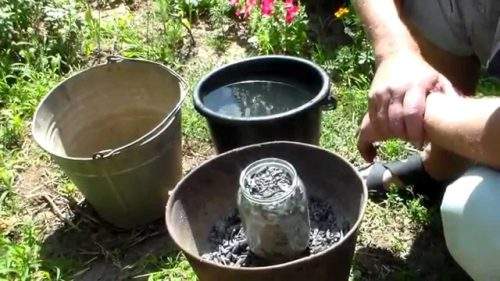

Ash infusion is an excellent protective, preventive and nutritious agent. The scope of its application is quite wide. As a fertilizer, ash infusion is the cheapest and most readily available remedy. And the benefits from it are no less than from various chemicals. Watering with ash infusion has a beneficial effect on plants, supplies them with the necessary substances, helps them withstand harsh weather conditions more easily, and destroys pests.
Depending on the purpose for which the solution is needed, it is prepared in different ways.
Product preparation rules
For wood or coal ash to be beneficial as fertilizer, it must be properly procured and stored. After incineration, the ashes are collected and placed in a wooden box with a tight lid. It is not recommended to use plastic bags for this purpose, as condensation can accumulate inside them, and the fertilizer will be spoiled.
It should also be borne in mind that only organic ashes can be used for feeding. Never use ash that is left over from incineration of household waste.
For soil
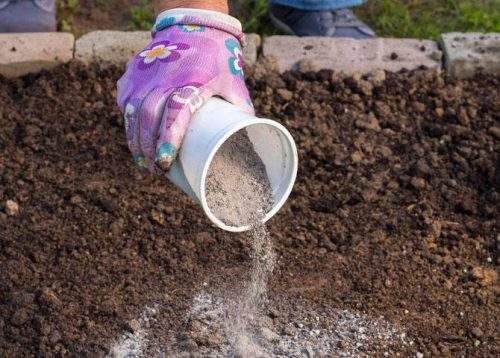

Ash infusion as a soil fertilizer can be prepared in two ways.
The first way
Structure
- ash - 100-150 g;
- water - 10 l bucket.
Preparation
- Add ash to a bucket of water. This should be done gradually.
- Stir until all the ash is dissolved.
- This aqueous ash infusion is used to fertilize the soil for flowers and indoor plants.
Second way
Structure
- wood ash - 1 tbsp. l .;
- water - 1 liter - boiling water.
Preparation
- Ash is added to boiling water.
- To stir thoroughly.
- Leave in a dark place for a week.
- Shake the contents every day.
This infusion of wood ash is used not only for fertilizing the soil, but it can also be used for watering plants.
Benefits for acidic soil
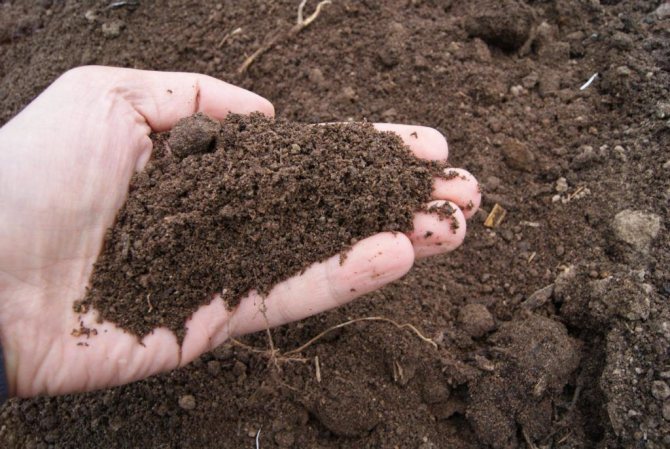

With intensive use of the land, the regular use of mineral fertilizers, the acidity of the soil increases. At pH <5.5, nutrients necessary for plants (potassium, calcium, magnesium) are washed out from the soil, phosphates are poorly absorbed, and soil bacteria stop decomposing organic matter.
Reference!
The introduction of ash under the potatoes increases the starch content in the tubers and increases the yield.
By introducing wood ash, they neutralize acidic soil. Follow the rules:
- do not apply simultaneously with superphosphate, ammonium nitrate, urea, fresh manure;
- applied simultaneously with humus and peat, increasing their efficiency;
- in spring they are introduced into peat and sandy soil, in autumn - into clay.
For plants
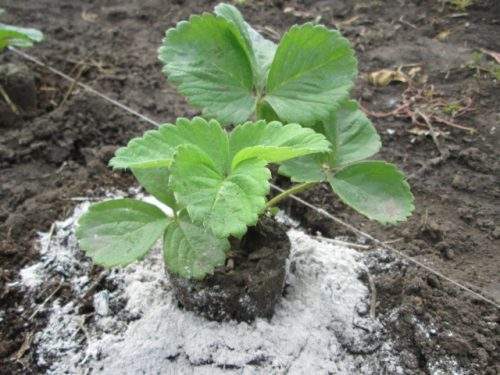

The use of infusion of wood ash for cucumbers, tomatoes has a beneficial effect on these plants. It is quite simple to prepare it, but there are many benefits. It is a completely organic fertilizer that does not contain harmful chemicals.
Structure
- ash - 1-1.5 cups;
- water - 10 liters.
Preparation
- The ash is poured into a bucket of water.
- All are mixed.
- Insist for about a week, while it is necessary to stir the mixture.
Such an infusion of ash is used for feeding cucumbers, tomatoes and other plants as follows: watering is done under the root. Each bush should have at least half a liter of solution. Then the soil is covered with a layer of mulching material.
When using the infusion of ash for watering plants, a better assimilation of all microelements occurs. They are quickly absorbed into the soil and reach the roots.
Infusion of ash can be periodically watered indoor plants. This will make them stronger and healthier.
Ash composition and benefits for ornamental indoor plants
Houseplant wood ash is a rich and long lasting source of:
- calcium carbonate, chloride, silicate and sulfate;
- potassium orthophosphate;
- magnesium carbonate, silicate and sulfate;
- orthophosphate and sodium chloride.
The use of ash for indoor plants allows:
- improve the composition of the soil, make it looser;
- disinfect the soil;
- feed soil microorganisms that produce nutrients;
- increase the number of peduncles and prevent them from crumpling before flowering;
- extend the flowering period.
Top dressing with an ash solution affects the size of the peduncles and their splendor.
The amount of trace elements in the ash substance is more than 30, so the plants receive the whole complex. For comparison, purchased concentrated formulations contain no more than 10 items.
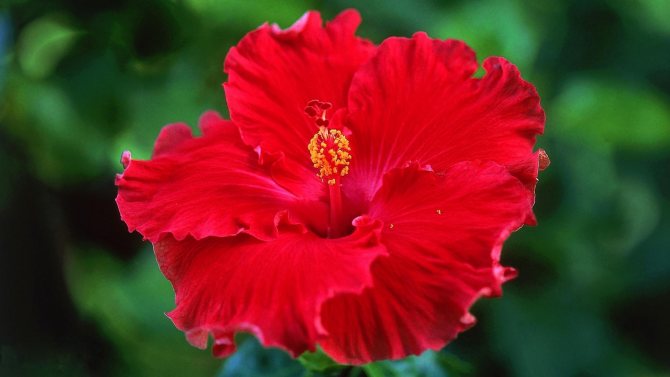

From pests
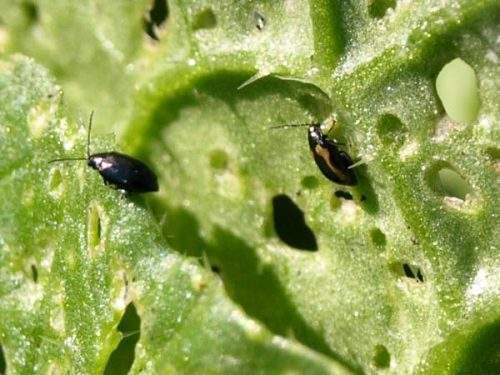

In addition to the fact that ash infusion is an excellent fertilizer, it can be used to get rid of various pests. There are several different recipes for preparing a solution.
The first way
Structure
- ash - 1 glass;
- cold water - 10 liters.
Preparation
- Mix the ingredients in the evening.
- Leave to infuse overnight.
Such an infusion of ash is used to spray cabbage from aphids and caterpillars. The procedure should be carried out at about 5-6 o'clock in the morning, before the butterflies begin to fly. The vegetable is processed completely. This should be done every day until the pests disappear.
Second way
Structure
- ash - 300g,
- water.
Preparation
- Ash must be sieved with a sieve.
- Fill with water and put the container on fire.
- Bring to a boil, cook for about 20 minutes;
- Leave to infuse, then filter.
The resulting solution must be diluted so that the total volume is about 10 liters.
In this way, an infusion of ash from aphids is prepared. Plants are treated with it until insects disappear.
Third way
Structure
- ash - 1 bucket;
- water - 3 buckets.
Preparation
- Mix ash and water.
- They put it on fire.
- Boil for one hour.
- Cool and filter.
The finished infusion is used to treat the bushes from powdery mildew.
Fourth way
Structure
- ash - 3 kg;
- hot water - 10 liters;
- laundry soap - 40g.
Preparation
- Sift the ashes.
- Mix with water.
- Add grated laundry soap.
- Mix thoroughly, the soap should dissolve.
- Leave to infuse for two days.
- Strain the infusion through cheesecloth.
Ash infusion is used to feed plants and protect them from pests.
However, you should not use such a solution for watering root crops (radishes, radishes, beets). Of course, the pests will disappear, but the plants will grow upward, i.e. will go to the "arrow". In this case, the substance should be used with care.
Spraying with ash infusion will help not only fertilize the plants, but also save them from various harmful insects. Indeed, sometimes it is they who destroy most of the crop.
Advice from gardeners
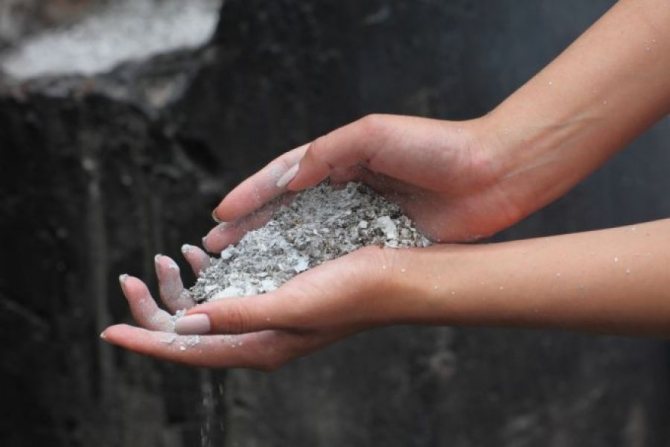

In early spring, ash is used in the garden and in the garden. It is poured wherever they want to make a bed for sowing cold-resistant crops and on garden paths covered with ice. The snow and ice underneath are melting quickly. In spring and autumn, ash fertilizer is sprinkled on the lawn. Top dressing promotes the growth of the grass, makes the color brighter.
From garden work, the skin of the hands deteriorates. To restore and lighten it, a folk remedy based on ash helps:
- warm water - 1 liter;
- ash - 3 tbsp. l;
- sea salt - 1 tsp
Hands are kept in the bath for 15-20 minutes. The skin brightens and becomes softer.
With the help of ash, gardeners improve the agrochemical properties of the soil, increase productivity, and fight pests. The desired results are achieved subject to the norms and timing of natural fertilization.
For seedlings
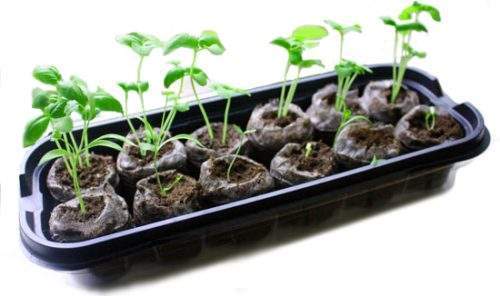

An experienced gardener knows the role of seeds. Some of them need to be soaked before planting. In this case, ash infusion will also help out.
Structure
- ash - 2 tbsp. l .;
- water - 1l.
Preparation
- The ingredients are mixed.
- Leave for tincture for two days.
- They are filtering.
The infusion is used to soak the seeds of some plants. They are left in solution for 5 hours. But the onion can be soaked in such a solution for 12 hours before planting.
At the seedling stage, young plants very often die, sometimes they simply do not have enough nutrients.
Ash infusion can be used for seedlings. Thanks to him, she will be strong, strong, resistant to disease.
The infusion is prepared in the same way as for soaking the seeds. It is used in its pure form, mineral fertilizers are added to it. The procedure can be repeated every two weeks.
However, it is worth remembering that such a remedy can be used only when the plant has real leaves. At the cotyledon stage, the solution may simply kill the plant.
In what cases ash can not be used
It is possible to assess the benefits and harms of wood ash for plants by the characteristics of the culture. Ash can be used for additional growth and support of soil minerals.
It is not allowed to use it with phosphoric ones, since ash has a sufficient amount of it in its composition, but in combination with nitrogenous feed, you can create favorable conditions for domestic crops, just do not mix and add them at the same time.
It is not recommended to make the discussed mineral dressing for such crops:
- rhododendrons;
- conifers;
- camellia;
- other plants that prefer acidic sites.
Dry
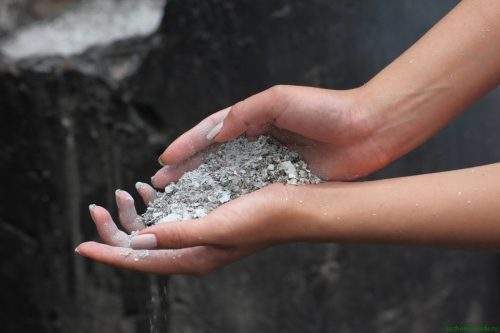

Ash infusion is an excellent remedy for plants. It is used dry from ants, slugs, snails can simply be sprinkled with ash near the plants. Leaves of trees damaged by insects can be lightly sprinkled with ash.
Before planting the plants, a small amount of dry ash is added to the hole. This will help the plant to take root in a new place faster.
Ash is a wonderful tool, the use of which will help any gardener take care of the site and plants. If you know how to prepare an infusion from ash, you will get an excellent nutritional and protective agent for plants, without overpaying large amounts of money.
15 February 2017
ditim
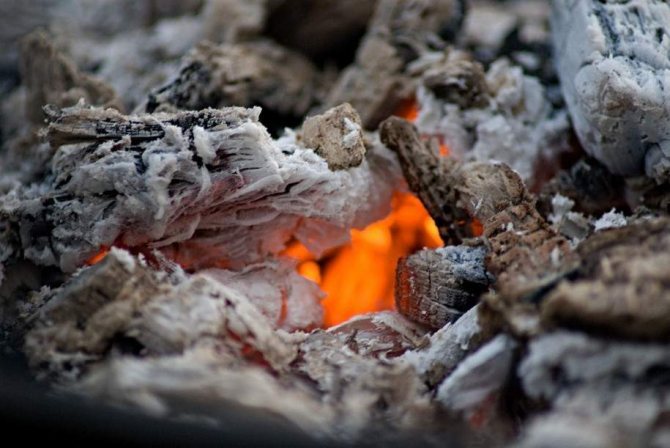

Ash is a very affordable and popular fertilizer for many plants. It is used for pre-planting treatment of seeds, soil, as a top dressing.
What are the benefits of ash for our plants?
It contains more than half of all elements of the periodic table! The most valuable in ash are silicon, calcium, potassium, phosphorus, iron, zinc, copper, manganese. The composition of the ash depends very much on what was burned. For example, the composition of birch ash and straw ash will be very different. The main disadvantage of feeding with ash is that there is absolutely no nitrogen in them.Therefore, it is recommended to supplement ash top dressing with nitrogen. However, do not add them at the same time, otherwise the nitrogen will turn into ammonia and evaporate. For the same reason, it is not recommended to apply ash along with phosphate fertilizers. Ash not only enriches the soil with the necessary microelements, but also loosens, reduces the acidity of the soil. Top dressing with ash is suitable for almost all plants.
But some plants, on the contrary, are used to living in an acidic environment (conifers, rhododendrons, azaleas, mahonia) and will not say thank you for feeding with ash
There are several ways as can dilute wood ash for plant nutrition. In this article we list recipesfound by us in one of the dacha directories.
What substances cannot be used simultaneously with ash dressings
Ash for indoor plants can be not only beneficial, but also harmful. It happens this way:
- If urea, ammonium nitrate and ash are added to the soil at the same time. The action of these substances is mutually opposite. It is better to add urea later for a week by the foliar method, and the ash solution into the ground, or wait 3 weeks between dressings.
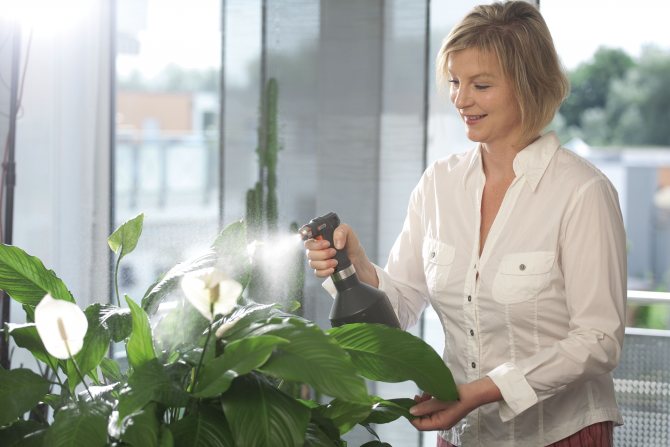

- If ash, bone or dolomite meal is added to soil neutral in acidity. Leaves on such soil will turn white from excess calcium, because these substances contain it in large quantities.
- A change in color from gray to rusty or brown indicates that it contains a lot of iron oxides and cannot be used for indoor crops, since phosphorus will be poorly absorbed, and top dressing will become useless.
Purchased ash has instructions on the back of the package, therefore, before using it, it is important to familiarize yourself with the composition of the substance, so as not to overdo it with fertilizer and not to urgently save the flowers by changing the soil.
Ash infusion for feeding
Liquid top dressing is very good during the growing season.
For tomatoes, wood ash is extremely useful: it promotes the growth of ovaries and the active ripening of ruddy tomatoes. You can simply sprinkle ashes for tomatoes around the bushes or prepare such an infusion for feeding:
- In 10 liters of water, 10 teaspoons of ash are diluted and allowed to brew for 7 days. The prepared infusion is poured over the plants at the root.
Recipe for a simple universal liquid top dressing:
- Just 1 glass of ash is enough to dissolve in a 10-liter bucket of water. Plants can be watered with this solution throughout the entire summer season.
Recipe for infusion to combat powdery mildew and aphids on currants and gooseberries:
- For its preparation, ash, tobacco and households are taken in equal quantities. soap, mix, insist, water the plants.
How to make fertilizer from ash
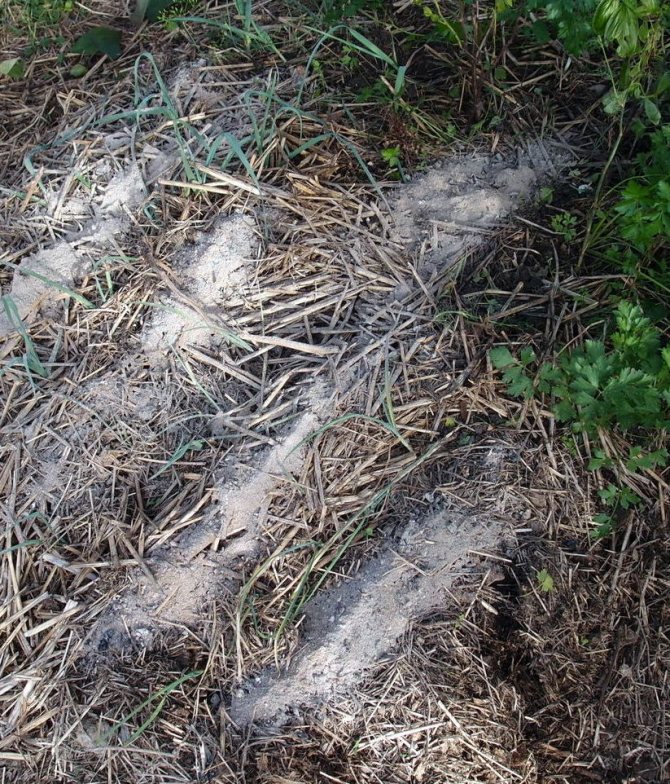

To stock up on ash, it is enough to burn unnecessary dry branches or use the combustion product from the stove. The latter option is relevant for the owner of a house with stove heating, or for those who have a fireplace. Otherwise, the substance can be prepared in advance, in the autumn. When the time comes to clean the areas of dry plant residues, it is enough to burn them and thus obtain fertilization.
To prepare top dressing, you will need a measuring cup and wood ash powder. The substrate can be used as is, or mixed with water or other mineral fertilizers in equal proportions.
Dry fertilizer
It is possible to carry out dusting with ash in dry form, without even sifting it first. Take the required amount and spray on the soil. Some gardeners advise to dig up the fertilizer, but you can leave it on top of the garden bed, since under the influence of moisture it will still gradually make its way into the lower layers of humus.
The dosage is determined based on the soil characteristics of the site. For sandy loam soil, you need to use 100-200 g of ash per square meter, but for loamy soil - 2-4 times more.
Do not exceed the indicated amounts of top dressing.This is fraught with a change in the alkalinity of the site, which can adversely affect the plants.
Wet top dressing
To prepare wet dressing, gradually dilute 100-200 g of dry powder in a bucket of warm water (10 l). It is recommended to water the soil for indoor flowers and greenhouse crops in advance with the resulting ash solution.
Liquid ash fertilizer is well absorbed by plant roots. Many summer residents prefer to carry out foliar feeding with such a solution, spraying the mixture on the green part of tomatoes, cucumbers and grapes.
The application of liquid ash fertilizer is demonstrated in the following video:
Preparation of the base (uterine) infusion
To prepare the mother liquor, you will need 1 kg of dry wood ash and 10 liters of water. After dissolving the powder in water, the substance is brought to a boil, maintaining the process for 10-15 minutes. Then 1 liter of the prepared infusion is mixed with 10 liters of pure water.
The solution after preparation does not lose its useful properties, the main thing is to ensure that the liquid is stored in a dark and cool place. It is allowed to enrich it periodically with potassium permanganate, boric acid and the same ash. Fertilization with wood ash will improve the composition of the soil, loosen it, and make it more aerated.
Which plant is very useful
Ash infusion can be used for regular feeding of various cultivated plants at their summer cottage (except for "lovers" of sour substrates - hydrangeas, conifers, rhododendrons, azaleas, heathers, etc.). When potassium, available for quick assimilation, is introduced under the plants, they instantly react to it. The cucumber family is especially responsive to such events - cucumbers, zucchini, squash, pumpkins, melons. The solution will also be grateful for the nightshade - potatoes, tomatoes, peppers, eggplants. The helper will be pleased with root crops - celery, carrots. Decorativka will respond with a lush growth of green mass, abundant flowering. Fruits and berries will pick up more sweetness.
There are clear signs of potassium starvation on zucchini and especially cucumbers: pear-shaped ugly fruits with a swollen "nose" and a narrow tail are formed. The foliage becomes brown at the edges, becomes covered with spots.
What is contained in ash
After parts of trees or grasses are burned, all the chemical elements, except nitrogen, which they contain, become an integral characteristic of the gray small residues. Three dozen minerals, including potassium and iron, magnesium and calcium, manganese and phosphorus, acquire a form that is easily assimilated by crops cultivated in the garden.
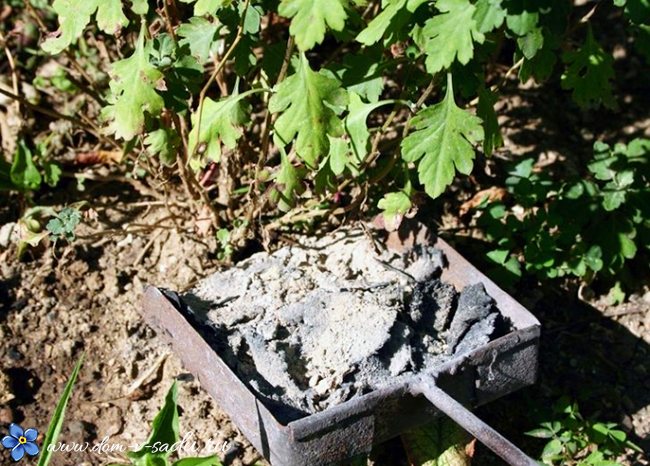

The point effect on the cultures of individual components of burnt wood is as follows.
- Calcium carbonate stimulates seedlings to the fastest growth, in some crops shortens the ripening period. Flowers become larger, inflorescences are more pronounced.
- Plants do not always absorb fertilizer elements. To improve this function helps calcium silicate.
- Calcium sulphate affects the gardening of seedlings, increasing it at times.
- It helps trees to become more resilient and survive harsh winters calcium chloride... It also makes it possible to cultivate, for example, grapes in cold climates. This element "dries up" crops and soil. It is necessary so that the tomatoes do not turn black, and the carrots do not crack. Thanks to him, grapes do not fall prematurely and strawberries do not grow moldy.
- If the summer is dry rock salt will ensure the vital activity of vegetables and fruits: it is because of it that moisture is retained and retained in the cells.
- Potassium salt promotes winter hardiness of trees and is useful for garden flowers.
- Indispensable for the roots of a rose magnesium, it also has a beneficial effect on the metabolism in cereals.
- Sodium interacts with enzymes that are not in contact with other elements. Because of sodium, enzymes begin to participate more actively in chemical reactions.
What is not recommended to do
So that wood ash does not lose its working qualities, it is recommended to store it exclusively in a dry place, protecting it from the negative effects of moisture. Frequent use of organic residues for feeding indoor flowers is contraindicated, since the alkaline reaction increases and their ability to absorb useful components decreases.
When working with organic compounds, you should use protective gloves and cover your face with a mask. It is inappropriate to use ash for flowers that do not like it (rosalia, camellia and other varieties growing on soil mixtures with high acidity).
The addition of wood ash to the soil makes it possible to enrich the soil substrate with nutrition and protect domestic crops from the attack of harmful individuals and ailments. The main thing is to make it dosed and no more than 3 times a year. Otherwise, the general condition of the flowers will worsen, and they may die.
Which ash is better
Burnt wood is of different composition. It depends on the age and type of burnt shrub or grass. Young growth gives more potassium, in old wood, the calcium content is much more noticeable. Hardwoods such as oak and poplar, elm and ash have more potassium than soft spruce, pine and aspen. Foliage and dry grass, burning, leaves behind a lot of potassium.
Important! The ash intended for feeding must be environmentally friendly: no polyethylene waste, printed matter or painted boards must get into the fire or stove.
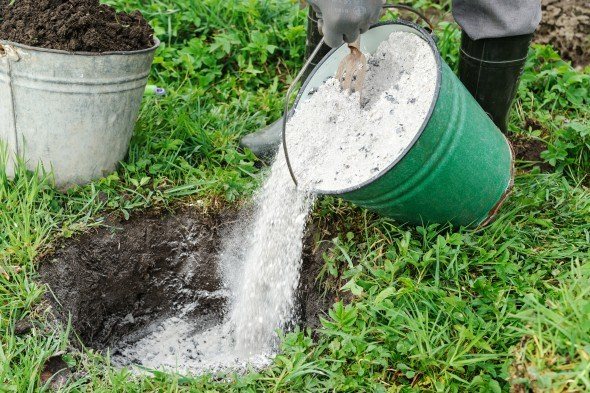

What is the best burnt substance for a vegetable garden? The question is ambiguous. It all depends on what goals the gardener faces: why complex watering is carried out and what trace element is in short supply for this vegetable. For example, phosphorus will be higher in oak ash, and potassium in buckwheat straw. Spruce firewood burns, leaving behind the most modest percentage of potassium, but such a residue is rich in calcium like no other.
| Ash element / composition | Birch | spruce | oak | buckwheat | rye | wheat | potato greens |
| phosphorus | 7-8% | 2-3% | 9-10% | 3-4% | 5-6% | 4-9% | 6-8% |
| potassium | 13-14% | 2-4% | 24-36% | 11-14% | 9-14% | 9-17% | 20-25% |
| calcium | 36-40% | 23-25% | 50-75% | 15-19% | 9-10% | 5-7% | 27-32% |
Compatibility with other fertilizers
The simultaneous application of ash and other types of fertilizers can lead to undesirable consequences, since the interaction of chemicals in the composition of both can reduce the effect or completely neutralize the effect of each other.
For example:
- urea and ammonium nitrate have the opposite effect, therefore it is better to apply them at different times - the interval should be at least three weeks;
- the soil receives an excess of calcium while adding bone (dolomite) meal and ash;
- the amount of ash should not exceed 0.8% of the mass of fertilizer with phosphorus, since it neutralizes the effect of compounds with phosphorus.
Reference! You can use ash with organic matter (compost, humus, peat). A mixture of tea leaves and ash (1: 1) gives a good effect.
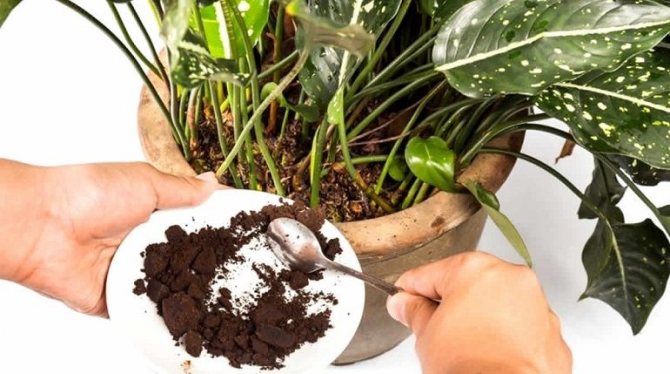

For which crops is ash applicable, and for which it is destructive
This is a universal fertilizer and can be applied to almost any plant, but it is mainly used for such crops:
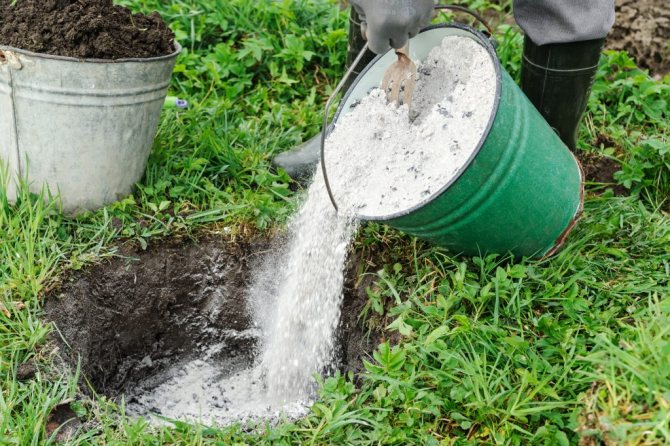

- potatoes;
- buckwheat;
- lentils;
- legumes;
- nightshade;
- zucchini;
- raspberries;
- currant;
- cucumbers;
- onion.
Feeding fruit trees and bushes in the garden will also have a beneficial effect.
Timing and tricks for hilling potatoes, and when it causes irreparable harm
Ash will be a good tool for alkalizing the soil, therefore it is mainly used on acidic and neutral soils.
The substance can harm some plants if:
- plants love acidic soil (apple, blueberry, honeysuckle, viburnum, quince);
- the earth has an alkaline pH;
- if nitrogen fertilizers were recently introduced into the soil, because they inhibit the beneficial properties of wood ash.
How is ash useful?
If you regularly feed your green “pets” with ash, this will have the most favorable effect on their growth and development:
- the friability of the substrate in the pot will increase, due to which more air will flow to the roots;
- all pathogens will die in the soil mixture;
- beneficial soil microorganisms that produce nutrients will be fed;
- the bush will have a larger peduncle, and the duration of flowering will also increase.
The fact is that ash contains more than three dozen different microelements. At the same time, the mineral complexes available on store shelves include no more than 10 trace elements.
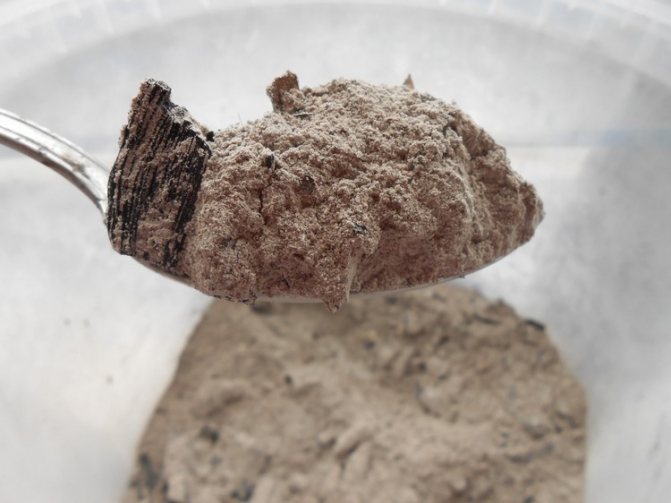

Making a decoction from the ashes
The ash broth takes a little longer to prepare, but the period of its effect on the roots is extended. To prepare a bucket of boiling water, add the combustion product in a 3: 1 ratio. The mixture is infused for a couple of days, filtered and filled into a spray bottle.
Some gardeners, the compound, diluted in the same proportion, is boiled over a fire for half an hour. If you add ordinary laundry soap to it, when spraying it will stay on the foliage and branches longer and additionally protect the culture from the invasion of aphids.
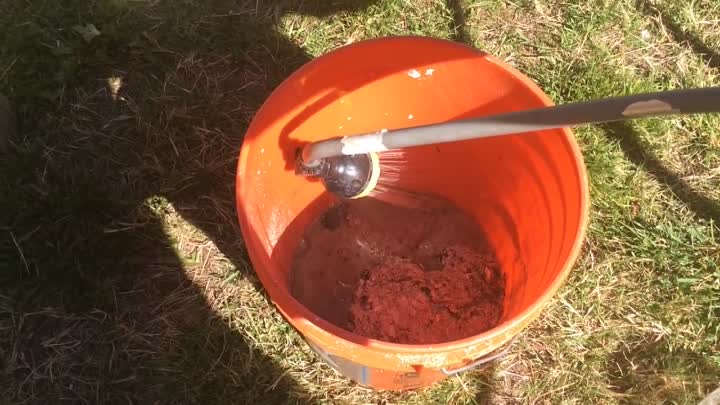

You can also cook a concentrated mixture (a glass of suspension per liter of water). Three liters of such a cocktail is diluted with water for irrigation up to 10 liters of volume. Watering is based on a bucket for one and a half square meters of the area occupied by vegetables or flowers.
Top dressing in the greenhouse
Greenhouse plants require special attention from the gardener and more frequent feedings with beneficial trace elements. Although there is also a reasonable limit here: for example, you can add combustion products to greenhouse crops no more than six times per season.
Before planting seedlings, fertilize the soil in the same way as described above. When the stem releases the first two or three leaves, we perform the second processing. As soon as the first inflorescences appear, the turn of the third feeding comes. The next watering is carried out with the appearance of the first fruits. Next, we turn to the product of wood combustion if necessary.


Ashes can be delivered to the plant in different ways: by sprinkling (but after it, be sure to spill the soil with warm water), pour infusion or ash broth. This arrangement is acceptable for greenhouse cucumbers.
Plant feeding
Despite the fact that the general principles for processing horticultural crops are the same, the approach for specific plant species has its own nuances.
Cucumbers
We feed either by sprinkling or pouring with a solution. Cucumbers are capricious and tender, so they should be treated with ash no more than 4-6 times during the whole season. Additional application of the substance can be carried out at the time of the general autumn digging of the garden.
Liquid version - 2 tablespoons per liter of water (insist and filter), dry - a glass per square meter. To combat aphids, you can spray the leaves by adding laundry soap to the solution.
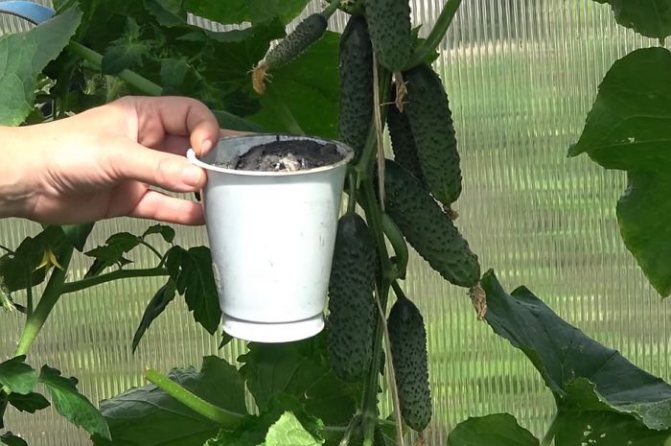

Tomatoes
To fertilize the tomatoes, pour one and a half glasses of the product from the oven into a bucket of water. One stem requires half a liter of the mixture for full development. We dig shallow grooves around it, fill in the liquid and level it with earth.
For the prevention of diseases, we prepare the contents of the spray bottle: pour 3 glasses of wood dust with water, boil for 30 minutes, cool and insist for a day. We filter and dilute in a 10-liter bucket of water. Add 50 g of laundry soap. This will not only save tomatoes from diseases, but also scare off pests. If the plant suffers from slugs, just scatter the ash near the roots and loosen the ground.
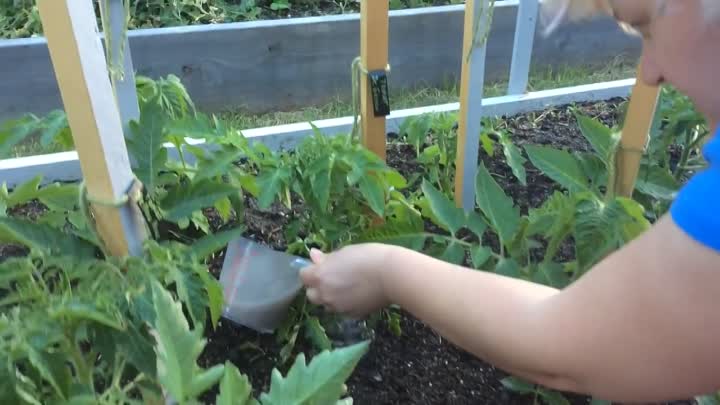

Important! When fertilizing tomatoes, the wood product must not be combined with manure, since ash neutralizes the nitrogen contained in the manure. Experts recommend fertilizing the soil with manure in the fall, and after winter - with ash.
Pepper
An excellent feeding of peppers is ash mixed with nettles. Mix a tablespoon of powder and 10 tablespoons of burning shoots, fill with water. We insist for a day, filter, add to a 10-liter bucket of water and feed the seedlings.
If you have to work with a spray bottle, you should reduce the concentration of the woody component so as not to burn the leaves. The spray water should be warm. Spray the mixture over the entire leaf - both on the outside and on the inside, the stem must also be processed.
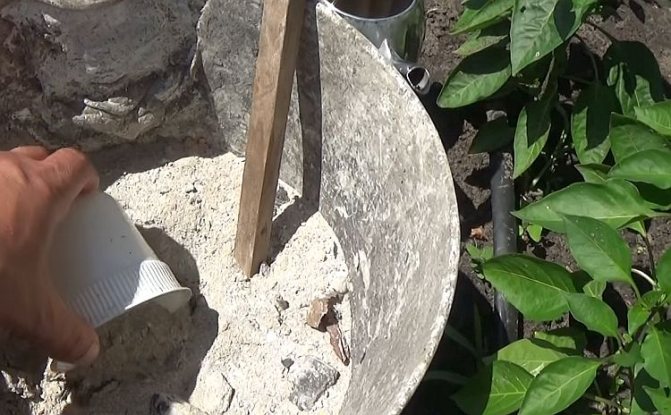

In addition, "gold from the stove" is brought into the ground during the autumn digging.
Onion
Onions are especially grateful to the product of burning birch, where the potassium content is increased. This fertilizer increases the amount of vermicompost in the ground, particles of plant origin are quickly re-heated in it and the soil becomes more fertile.
If the use of a wood product takes place, the onion heads last longer and do not rot. The ash contains potassium, which is extremely important for onions. With its lack, it turns yellow and dries, yellow spots are visible on the arrows.
Onions are treated with a woody substance at the stage of preparing leek seeds (soak for six hours in a mixture of powder, 1 tsp, and water). The bulbs intended for planting are sprinkled with ash per day.
Fertilizer is applied in the form:
- two-day infusion (250 grams per 10 liters of water - at the root);
- daily infusion for spraying against pests (100 grams per liter of water);
- dry dressing (100 grams per square meter).
Garlic
The fungus, which often affects the heads of garlic, disappears if the bed is treated with a mixture of dust from the stove and soap, diluted in plain water. It can be an elementary solution (100 grams of ash per 10-liter bucket of water), or it can be a decoction (pour 20 g of powder with water, boil for half an hour - and dilute in the same bucket).
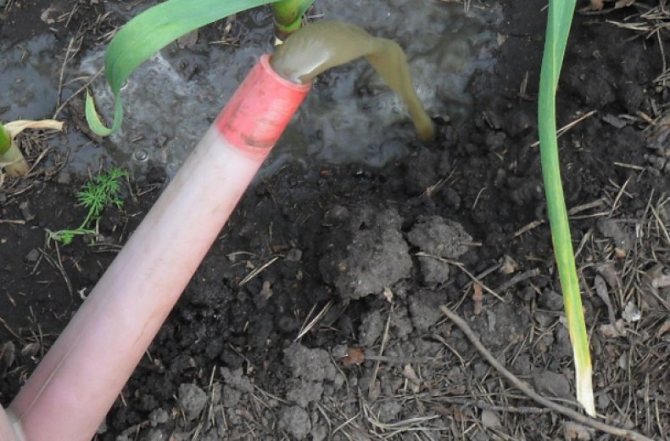

Processing takes place twice a month or as needed when diseases, pests or signs of micronutrient deficiencies appear. For the prevention of powdery mildew, garlic is processed in the second decade of June with a decoction, to which an additional 50 g of laundry soap is added.
Recall, along with fertilization, one of the most effective preventive measures is the timely weeding of garlic.
Potatoes
When using the product of combustion of wood, potatoes are less affected by the Colorado potato beetle, the tubers contain more starch and are not susceptible to late blight. When the gardening season comes to an end and the crop is harvested from the potato garden, it's time to think about the soil. If the soil is clay, during the autumn digging, 100 grams per square meter is applied, if it is sandy, the procedure is carried out in the spring.
Before planting, sprouted tubers should be sprinkled with ash: a kilogram of bulk agent is scattered on a bag of potatoes. At the time of planting, 40 g of suspension is added to each hole. When the first flowers appear on the stems, half a glass of the substance is poured under the root.
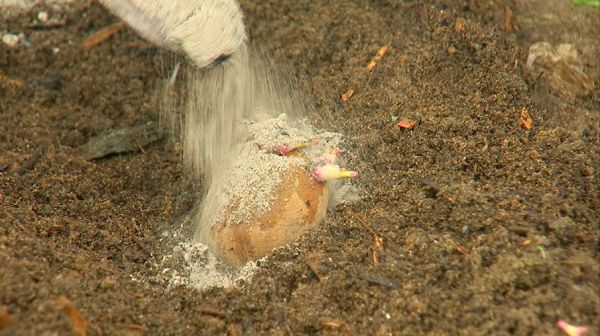

If feeding is a solution, we dilute one and a half glasses in a bucket of water. Water in the morning so that moisture does not remain near the growing tubers at night.
Cabbage
Cabbage seedlings will be less susceptible to slug infestation if you periodically apply ash broth or scatter dust from the oven around the plants. If the weather is not happy, the rains do not stop, processing should be carried out more often than in a dry hot summer.
When planting seedlings, 40-50 grams of the product are poured into each hole. This will save the crop from diseases such as keela and blackleg. When digging the ground at the end of the gardening season, add 100 grams per square meter to the cabbage bed.
Carrots, beets
Gardeners always have beets and carrots nearby: they are sown at the same time and harvested on the same day. Often the beds are close by. It is not surprising that the proportions of fertilizers required here are almost the same. This is fully true for ash compositions.
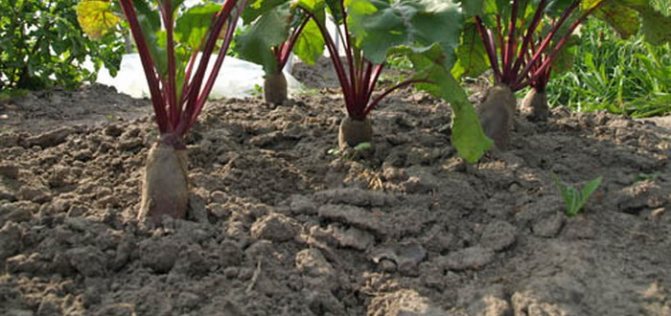

When the bed is dug up in anticipation of sowing seeds, add a glass of powder per square meter. If you sprinkle the substance on already dug earth, it can grab a crust. In this case, it will be more than problematic for the seeds to break through to the light through it.
As soon as the first shoots appear, sprinkle the beds with woody substance again. Immediately spill the seedlings abundantly so that the top dressing seeps out to the root crops. This approach will not only fertilize the soil, but also protect the crop from pests.
Zucchini
If the land intended for planting zucchini has a high clay content, add washed river sand, a tablespoon of superphosphate and three tablespoons of ash per square meter.
Before planting, zucchini seeds are soaked in a liter jar of water, where 2 tablespoons of wood combustion product are diluted. When green peppers appear on the stalks, pour the bushes with a mixture of urea (1 tablespoon), wood product (2 cups) and 10 liters of water.
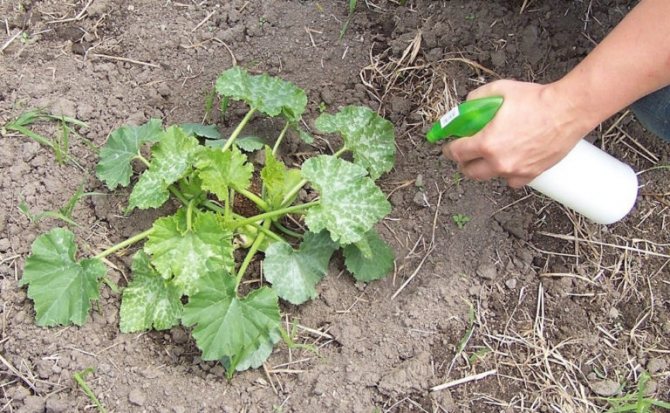

If the leaves are affected with brown spots or begin to turn yellow, they can be poured with a solution of 200 g of powder in a 10-liter bucket of water. In dry form, the medicine is sent from the oven to the grooves around the root of the squash.
Strawberry
Wood fertilizer is allowed to the strawberry garden three times per season: at the beginning, when the snow melts and the top layer of the earth warms up a little with the early spring sun, after the berry harvest and in the fall, during the global digging of the entire vegetable garden.
When the first green leaves make their way through the layer of last year's foliage and gardeners begin to clean and loosen the garden, it's time to add gray suspension. Approximately 15 grams of the substance not only stimulates more active growth of greenery, but also prevents the occurrence of gray rot.
When the last strawberry leaves the garden, and the crop is sent to be canned in jars in the form of compote and jam, the bush does not cease to exist. It is during this period that the buds of the next harvest are born, the roots grow. Each bush should be spilled abundantly with an ash solution or infusion.
Traditional fertilization in autumn is no different from other crops: a glass of powder per square meter of soil will allow strawberries to survive winter frosts and snowfalls.
Grapes
The climbing plant does not like the frequent invasion of its world: ash additives can be added no more than four times per season. The first - sprinkling - is carried out in early spring. The second - at the beginning of summer for preventive purposes. If signs of disease appear on the leaves, you can spray the plant in July.
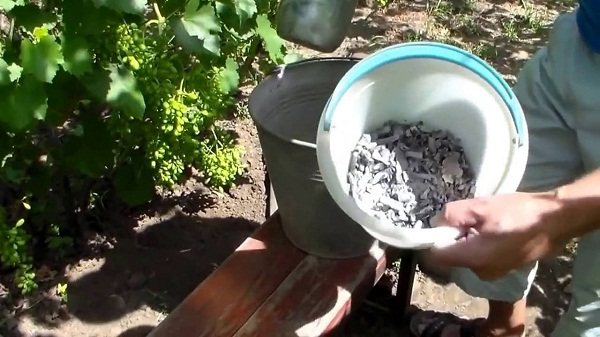

The grapes are processed in the evening after sunset. 350 g of powder is diluted in a liter of water, infused for 24 hours and stored in a cool cellar. The infusion should be used within a month. Before spraying, dilute the concentrate in five parts of water and add grated laundry soap so that the spraying lingers on the foliage.
The last treatment is carried out in the fall after the grapes are removed from the branches. Each root is poured abundantly with water on the eve of wintering, in the last bucket we pour 350 g of ash on each trunk. It is enough to carry out autumn feeding once every three to four years.
Trees and bushes
At the time of planting seedlings, a mixture of soil with 100 grams of wood substance should be added to the hole. Such feeding makes it possible for the roots to quickly adapt to a new place, air flows freely to the root system.
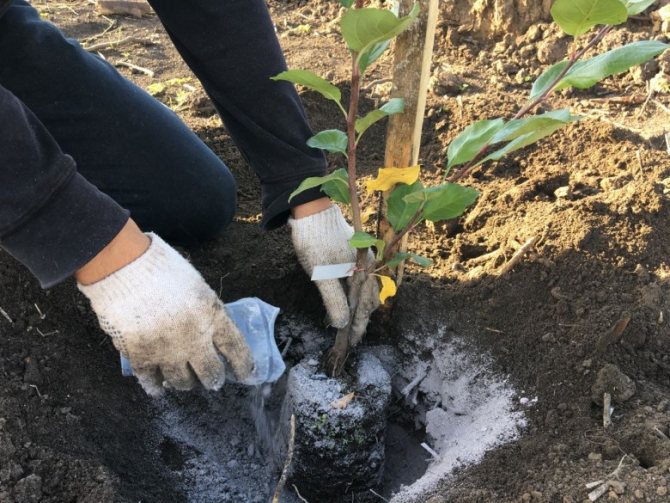

If shrubs and trees have been growing on the site for several years, to prevent diseases and saturate the plant with potassium, phosphorus and calcium, it is enough to fertilize them once every three to four years.
This can be done either by adding a couple of kilograms of "oven gold" to the grooves around the trunk, or by abundantly spilling the near-stem area, adding 450 grams of wood dust to the last bucket.
Flowers
Feeding flowers always has two goals: to grow a stem that can support the weight of the inflorescence, and to grow luxurious buds.
Annuals are fed a couple of times over the summer: 20 days after planting to strengthen the stems, and at the time of bud emergence to stimulate their development and extend the life cycle.Perennials are fertilized three times, including the introduction of ash before wintering flowers. When planting, the flowers are not fertilized.
Feeding methods - sprinkling, watering with a 2-day infusion (10 g per liter), spraying (20 g per liter). Flowers are fed either early in the morning, before the sun has risen, or in the late evening, when it has already set.
Houseplants are fertilized in the same way, adjusting for the area occupied by the soil.
Use in the garden
Oven gold is good for most garden crops. Carrots and beets, cabbage and potatoes, fertilized with it, grow faster, give a large harvest, and tolerate winter frosts well. According to the standard, 10 square meters of area occupied by vegetables and fruits accounts for from a kilogram to two gray matter.
The combustion product of wood is indispensable on lands with an overabundance of clay. It makes the soil fluffier, looser and lowers the acidity level if up to 7 kg of powder is distributed over 10 square meters.


On such lands, a free-flowing substance is added during digging, which is carried out before winter. In spring, gardeners use it on soils with an increased amount of sand.
Unlike the main amount of chemical fertilizers sold, the natural substance acts on soils for up to 4-5 years.
Important! Ash mixed with manure or ammonium sulfate is not suitable for use in the garden. If lime is included in the mixture, plants will not be able to absorb phosphorus from it.
When measuring the prescribed amount of grams of the substance in question, it should be borne in mind: 1 teaspoon holds 2 g of suspension, 1 tablespoon - 6 g. A standard 200-gram glass contains 100 grams, and a liter jar holds a pound of powder.
How do you know when crops need additional nutrition?
You can tell if your plants need micronutrients by looking at their appearance. By the same signs, it can be determined that agricultural crops are oversaturated with nutritious fertilizing. Both have a negative impact on the health and immunity of cultures.
Signs of nutritional deficiencies:
- Potassium deficiency - deformation of the shape of the foliage, the appearance of yellow or dark spots on the surface of the leaf plates, the dropping of buds, as well as ovaries, premature fall of flowers, the formation of dark spots of various shapes on the fruits, the cessation of crop growth, the dying off of the upper greens of the shoots.
- Deficiency of calcium or magnesium - wilting of foliage, deformation of leaf plates (leaves curl into a thin tube), tips of leaves begin to dry, flowers lose aroma.
Signs of nutrient overload:
- Excess potassium - blanching foliage, premature fall of leaves, darkening of the pulp of apple and pear fruits.
- Excess calcium - death of shoots, premature fall of foliage, the formation of signs of chlorosis, active growth of greenery without the formation of ovaries and flowers.
- Magnesium oversaturation - death of roots, lethargy of the plant, lack of flowers or fruits.
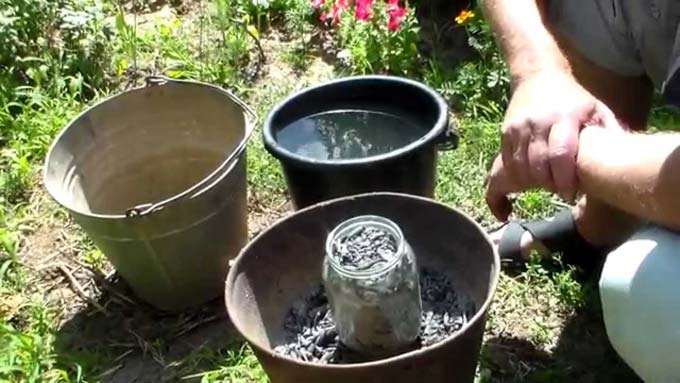

Fertilization methods
You can feed the soil, as well as use ash broths, powder or solution in the garden in different ways. Their choice depends on the ultimate goal of preventive measures.
Root feeding
Effectively adding ash directly to the roots. The main rule here is not to pour in clean powder and not to straighten the roots on it. It is imperative to mix ash with earth or other components, and only then engage in planting.
At the stage of planting seedlings, one to three tablespoons of the substance is required for each hole. A glass of gray "flour" is poured into the bushes at the time of rooting, and about a kilogram of fruit trees.
Foliar fertilization of plants
Foliar top dressing includes, first of all, sprinkling and spraying with a loose substance.
Sprinkling
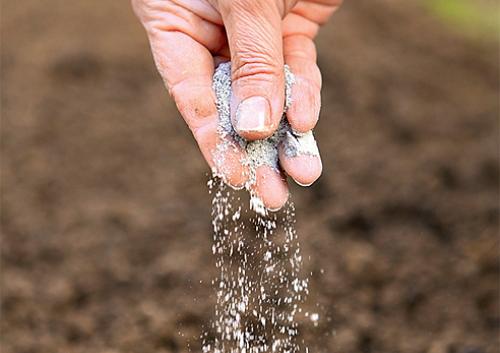

You can scatter the remnants of the fire in the garden throughout the season.
When fruits begin to set on trees and shrubs, the wood suspension is not only scattered around the trunk, but also on the leaves to scare off pests. In autumn, this substance is added to the soil during pre-winter digging.
Ash is also sprinkled on the compost layers to improve decomposition processes. Proportion - for 3 square meters of area - 1 glass of powder.
Important! Do not sprinkle ash on top of the soil and leave it that way. The soil becomes covered with a hard crust, preventing air from reaching the root system.
Pollination can also be beneficial if the roots of the shrub are damaged. This approach will help them recover in no time.
Spraying
The spraying process is carried out either with an ash solution or with a strained broth. The object of spraying can be not only stems and foliage, but also tubers and seeds of horticultural crops. Spraying is done with a spray bottle, so the mixture must be filtered before use.
With direct access of the powder to the vegetative organs, its trace elements are absorbed by the plant faster than when poured under the root. This method allows you to get a thicker foliage, brighter colors of the buds and, along the way, get rid of a number of pests and fungi.
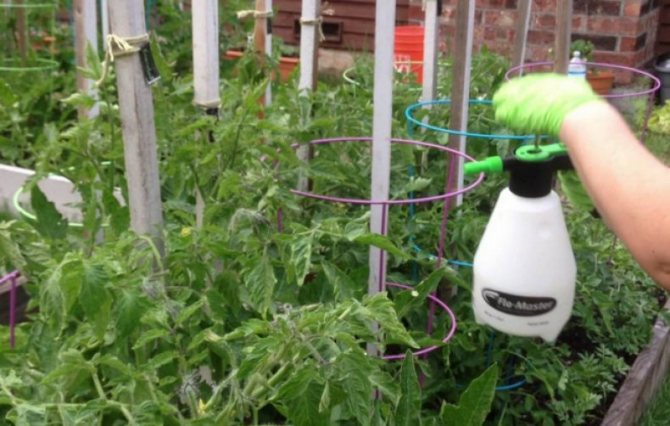

It is interesting! The inside of the leaf is more susceptible to fertilizers, while the outside of the plate is more protective. Therefore, when spraying, it is necessary to process not only the stem and top of the leaves, but also their seamy side.
When shouldn't ash be used to fertilize plants?
Despite all the advantages of ash, sometimes it is better to refrain from using it and it is worth doing it in the following cases:
- if the ash is of unknown origin (for example, left in the forest after unfamiliar tourists) - it can often contain the remains of plastic, paper with printing ink and other debris;
- if houseplants grow better in acidic soils (azalea, hydrangea, zebrin, calla lilies, camellia, cyperus);
- in the case when plants are sick with chlorosis and white spots appear on them;
- if an excess of potassium is already observed in the soil, the leaves begin to fall off the plants;
- in a situation where nitrogen-containing fertilizers were introduced into the soil over the past 14-30 days: urea, manure, ammonium nitrate. In this case, there will be no efficiency from top dressing with ash - nitrogen neutralizes the phosphorus-potassium base of the ash.
Ash as a fungicide
The ash treatment of agricultural crops is effective against powdery mildew and putrefactive diseases.
- Treatment of strawberries from gray rot is carried out with a concentrated infusion of ash (take 300 g of product for 6 liters of water, leave for 6 hours, then strain and add 4 liters of concentrated soap solution). At the first signs of pathological development, strawberry bushes are processed every 2 weeks. Calculation of the active solution for each bush - up to 2 liters.
- Root rot on cucumbers is treated with dry ash powder by dusting. Another method of treatment is to treat agriculture with a solution based on 1 liter of water, 6 tbsp. tablespoons of ash and 2 tbsp. spoons of copper sulfate. Plants are processed during the period of the day when there is less solar activity.
Ash infusion is used to treat fungal diseases on cabbage and pumpkin plants. Preventive treatment of cabbage with an ash solution increases the resistance of agriculture to the development of keel and black leg.
The use of a solution or infusion of ash is effective only in early forms of disease development. If the disease is in an advanced stage, then it will be more effective to use fungicides based on chemical compounds.
Wood ash as fertilizer composition, application, planting
Which plants can be heated with ash, and which plants do not like ash?
saltpeter, urea, humus, manure.Overdo it - everything will go to the tops! In the summer, flowering and fruit set are needed - we use PHOSPHORIC fertilizers (superphosphates). In the fall, fruits need ripening, a set of sugars, and their long-term storage.
sorrel, conifers, blueberries, some types of flowers (rhododendrons, hydrangea, cinquefoil). Ash is not brought in in the spring! Nitrogen and potassium fertilizers are incompatible (any chemist will tell you about this), because they form insoluble compounds.
Ash "alkalizes" the soil, and more often in new gardens, the soil is acidic. Over the years, when humus and manure are introduced, after 15 - 20 years, the soil in the garden becomes close to neutral, but over the years rot, fungi, viral diseases, molds are added and developed - which are also treated with wood ash.
Despite the whole list of advantages, there are cases when the use of a combustion product is not recommended:
- in case of unknown nature of origin (remnants of plastic containers, newspapers);
- flowers growing on acidic soils should not be watered with an ash solution (azalea, zebrina, hydrangea, calla lilies, cyperus, camellia);
- you should not feed flowers with wood ash when they are affected by chlorosis or have white foci on their leaf plates;
- with an excess of potassium in the soil, when the leaf plates begin to crumble;
- if fertilizers with a high nitrogen content such as urea, manure, ammonium nitrate were added to the soil in 14-30 days.
Feeding flowers with ash
Ash fertilizer is especially useful for roses, lilies, clematis, gladioli and peonies. When planting seedlings of flower crops, 5-10 g of ash are laid out in each hole.
Flowers that have been attacked by pests are evenly powdered with ash infusion (with the addition of soap). This is done in the morning in calm weather in the dew or after rain. During drought, plants can be sprayed with room temperature water before treatment.
Now you know how to prepare top dressing from ash and how to use it correctly in the garden, garden and flower garden. This organic fertilizer is not only good for plants, but also safe for people and pets.
Ash infusion for plant nutrition is one of the most affordable and well-known means. Plant ash contains many useful substances, and it is quite easy to get it even in your garden.
Foliar top dressing with ash
Foliar feeding can be carried out not only with ash infusion, but also with a decoction. To do this, sift 300 g of ash, pour boiling water and boil for 25-30 minutes. Then the broth is cooled, filtered and diluted with 10 liters of water. To make the dressing better adhere to the leaves, you need to add 40-50 g of laundry soap to it.
Spraying with ash broth helps protect crops from diseases and pests, in particular from wireworms, aphids, cruciferous fleas, nematodes, slugs, and snails.
Benefit
Wood and plant ash, as a fertilizer for many indoor flowers and horticultural crops, has the following beneficial qualities:
- improves the quality of the composition of acidic soil rocks;
- improves a favorable habitat for beneficial microflora;
- helps seedlings to root faster;
- stabilizes the metabolic processes of plants;
- helps flowers bloom more luxuriantly;
- promotes better absorption of nutrients and vitamins;
- increases the resistance of agricultural crops to unfavorable climatic changes and the development of disease-causing processes;
- promotes active development and rapid growth of the root system;
- stabilizes the process of photosynthesis;
- increases frost resistance of agricultural crops;
- strengthens plant immunity;
- is a prophylactic agent against pest attacks.
Ash solution recipes
There is a concentration of ash solution or infusion for use in various situations: feeding vegetables, flowers, processing from pests.
Top dressing from nettle and ash
Fresh nettles are often used to make green fertilizers.This infusion of fresh nettle herb and other weeds (shepherd's purse, tansy) is prepared for 5-7 days, adding Baikal or a little yeast (fresh bread or crackers) to accelerate fermentation.
To increase the effect of feeding, ash is added to the container with grass, about 200 g per 15 liters.
The finished infusion is diluted 7 times with clean water before use. It is used to feed all vegetable crops, except for garlic, onions, legumes.
Video: recommendations for preparing an ash infusion for dressings and treatments
Good harvests and easy labor in your summer cottage!
Adding an article to a new collection
Not sure how to use wood ash on site? In this article, we will explain in detail how to properly feed different crops using regular ash.
Wood ash contains about 30 minerals in an accessible form, which are necessary for the proper development of plants. At the same time, there is no chlorine in such a valuable fertilizer, so it is recommended to use ash for feeding plants that react negatively to this element: strawberries, raspberries, currants, potatoes. Also, all pumpkin seeds, cabbage, beets, tomatoes and cucumbers respond well to the introduction of wood ash.
But keep in mind: plants that like acidic soil (for example, blueberries, cranberries, lingonberries, azalea, camellia, rhododendron) cannot tolerate ash.
Ash is stove (from burnt wood) and vegetable ash. Ash from firewood and logs, which are free of mold and various impurities from burning plastic film, synthetics, rubber, colored paper, etc., is considered environmentally friendly and suitable for use as fertilizer. Of the tree species, potassium is most contained in the ash of deciduous crops, especially birch. It is also recommended to use it as a fertilizer for the garden.
Also valuable ash is obtained by burning herbaceous plants such as sunflower and buckwheat. They contain up to 36% potassium oxide. And the least potassium and phosphorus in peat ash, but there is a lot of calcium.
Firewood and plant residues are best burned in a large iron box with high walls to prevent the ash from being blown away by the wind.
Do not feed with wood ash obtained from the incineration of household waste.
After burning wood or plants, the ash is collected and stored in a dry place in a wooden box with a tight sealed lid. Plastic bags for storing ash are not suitable as moisture condenses in them.
How much ash is contained in different containers
| Capacity | Ash weight (g) |
| 1 tablespoon | 6 |
| Glass 0.2 l | 100 |
| Bank 0.5 l | 250 |
| Bank 1 l | 500 |
Wood ash is used in dry and liquid form. In the first case, the ash is simply embedded in the soil as fertilizer, and in the second, ash infusions and solutions are prepared from it.
Preparing the mother liquor
For ease of use, experienced summer residents first prepare the uterine infusion. How to infuse ash:
- 2 liter cans of sifted ash are poured into a bucket and the powder is poured with 8 liters of clean tepid water.
- How much ash to infuse? - 2-3 days, periodically stirring with a wooden stick, after which it is poured into another container, leaving the sediment in the bucket. It can be added to the composting bin.
An ash solution is prepared even faster by stirring 1 glass of ash in 8 liters of lukewarm water. The concentration of nutrients in such a solution will be several times lower.
